Quietly, Pakistan Wages a Deadly Drone Campaign Inside Its Own Borders

© Akhtar Soomro/Reuters

© Akhtar Soomro/Reuters

Eight people were injured in Russian attacks on Kherson Oblast, local law enforcement officials reported on June 18.
The Russian military targeted several settlements in the region using artillery and drones, according to authorities.
As of 6:00 p.m. local time, eight civilians were reported injured, including two men in Komyshany and Romashkovo, and six others in Bilozerka, Beryslav, Antonivka, and the regional capital Kherson.
Civilian infrastructure, including private homes and residential buildings, was also damaged in the attacks.
Kherson Oblast is located in southern Ukraine, just north of Russian-occupied Crimea, and has been relentless targeted by Russian forces throughout the war.
Ukrainian forces liberated the city of Kherson, the regional capital, in November 2022.
Russian troops continue to occupy large parts of the region and regularly launch attacks on civilian areas using artillery, guided bombs and drones.
 The Kyiv IndependentAnna Fratsyvir
The Kyiv IndependentAnna Fratsyvir

© Arash Khamooshi for The New York Times
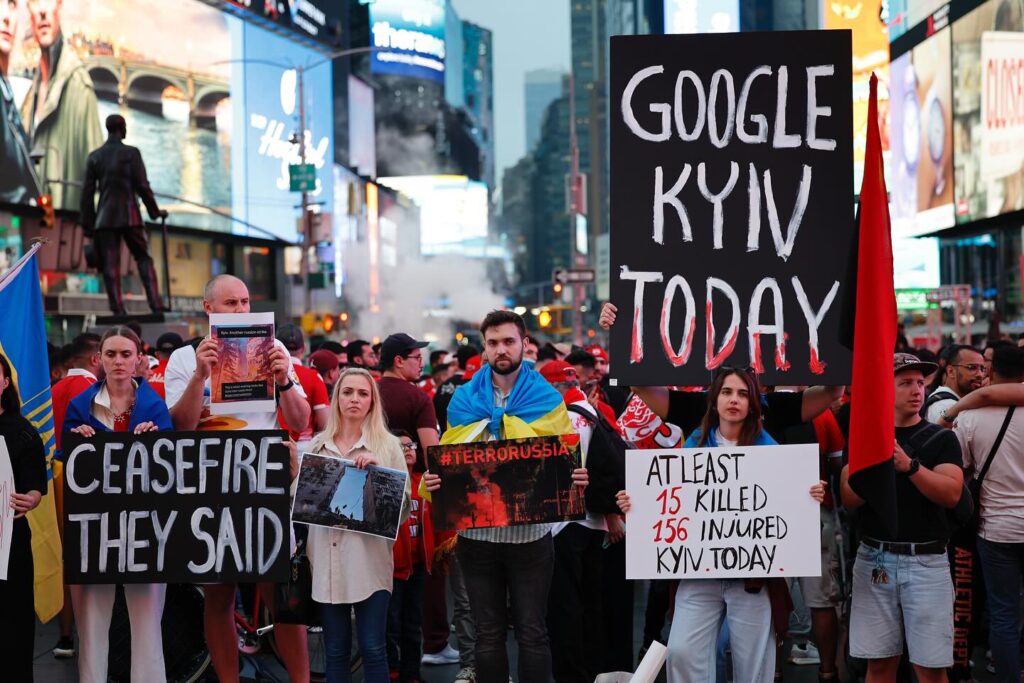
Ukrainians and Americans organized an emergency demonstration at Times Square demanding more US action against Russia following a massive Russian attack on Ukraine that killed more than two dozen people on 17 June.
The rally took place on the evening of 17 June, with demonstrators carrying Ukrainian flags and signs reading “Google Kyiv today,” “‘Ceasefire’ – they said,” and “Sanctions against Russia – now,” according to protest participants Vsevolod Myrnyi and Marichka Hlyten.
Myrnyi called on participants to contact their elected officials.
“Call your representatives and senators. Tell them: ‘We demand more sanctions against Russia. We demand air defense systems for Ukraine. We demand more military aid – weapons that help save lives,'” he wrote.
He emphasized that Ukraine is defending itself while Russia targets civilian buildings, and noted that while Congress already has many supporters for Ukraine, constituent voices help drive action.
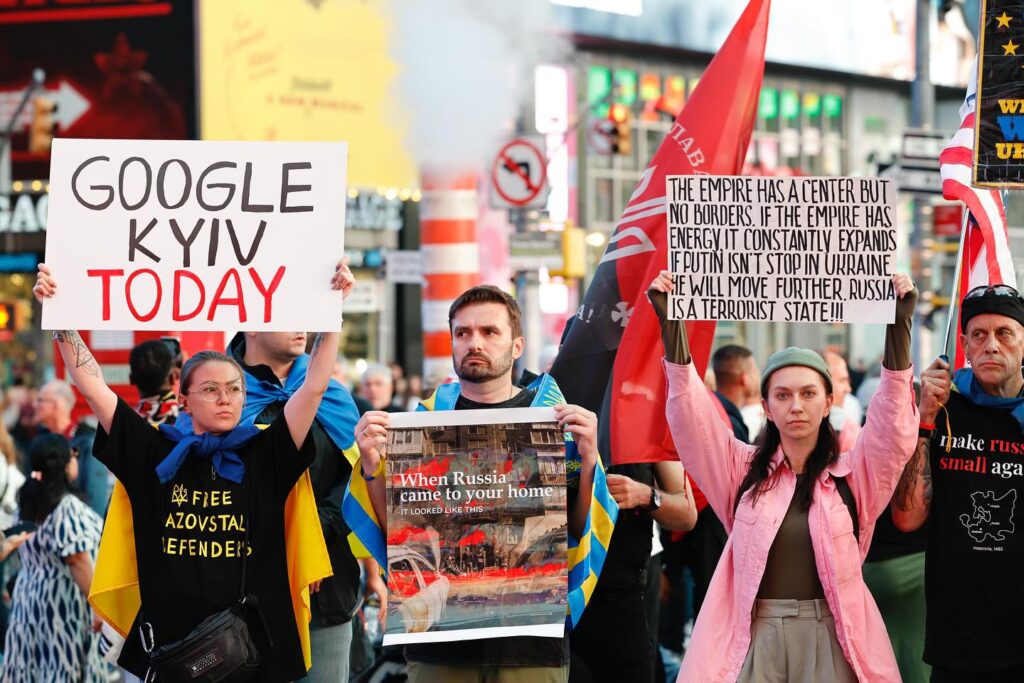
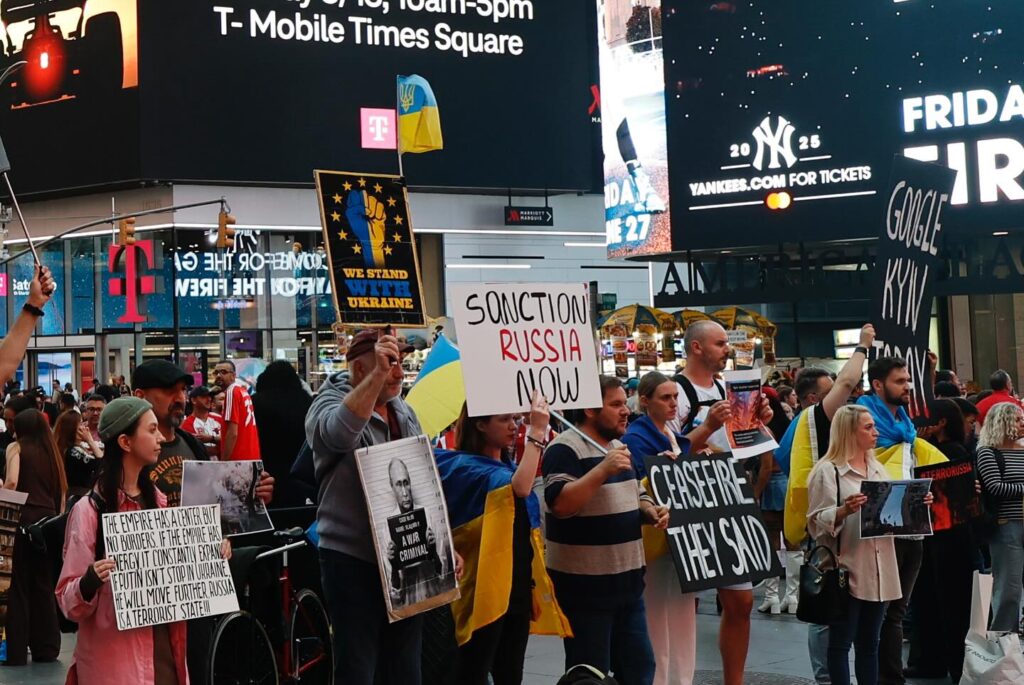
The demonstration responded to a Russian assault on the night of 17 June that targeted Kyiv and multiple Ukrainian oblasts. Russian forces launched 440 drones and 32 missiles against Ukraine, striking Odesa, Zaporizhzhia, Chernihiv, Zhytomyr, Kirovohrad, Mykolaiv, and Kyiv.

Ukrainian air defenses destroyed most of the incoming targets, but hits were recorded in 10 locations, with debris from downed objects falling in 34 locations. In Kyiv, 28 people died and 134 were injured, with the death toll from a missile strike on a 9-story residential building reaching 23 people.
In Odesa, a 60-year-old woman was killed and 17 people wounded, with damage to residential buildings, an inclusive center, a preschool, and garages.
Meanwhile, Ukrainian President Volodymyr Zelenskyy told G7 leaders that Russia intensified its nightly drone attacks as “the only real change” since Trump returned to the White House, with Moscow now routinely deploying 100 drones per night compared to what would have been shocking levels a year ago.
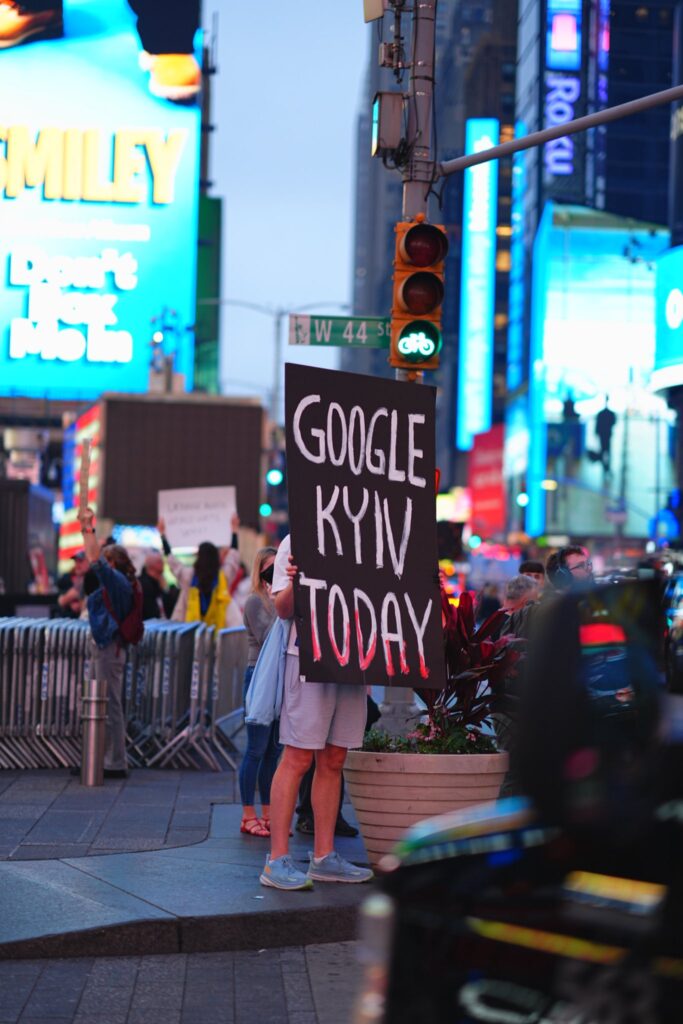
The Ukrainian leader argued this escalation proves supporters of stronger sanctions are “absolutely right.” While Trump told reporters at the G7 summit he would not approve new sanctions against Russia, citing costs to the US, Zelenskyy called for a $30 per barrel price cap on Russian oil and $40 billion in annual budget support for Ukraine.
The US is currently blocking European efforts to lower the existing $60 per barrel price cap to $45, despite EU and UK pressure to reduce Moscow’s war funding, with Zelenskyy arguing that “Russia blocked all efforts” at ceasefire negotiations and continues military operations without adequate consequences.

The number of fatalities from Russia’s 17 June massive attack on Kyiv has climbed to 26 people, with rescue teams continuing to recover bodies from the debris of a destroyed residential building.
Search and rescue operations have been ongoing since the early morning hours on 18 June at a nine-story apartment complex in Kyiv’s Solomianskyi district struck by a Russian ballistic missile, according to Ukraine’s State Emergency Service.
Rescue crews worked through the night to extract victims from the rubble. The casualty count increased throughout the day as emergency workers made additional recoveries, with the latest update on death toll being 19 people killed in one single building. Five more civilians died on other sites affected by the Russian attack.
[update] As of 1 p.m. on 18 June, the State Emergency Service reported that the number of killed people retrieved from the destroyed building in Solomianskyi district has risen to 21, moving the total death toll up to 26 people.
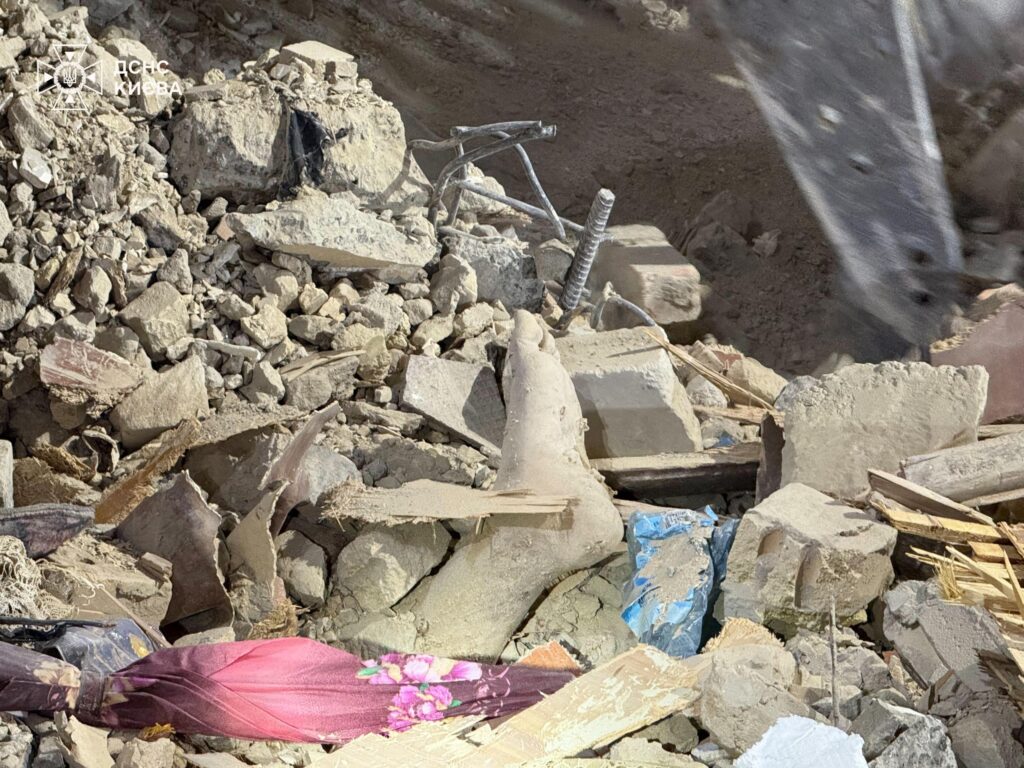
Among the victims was a 31-year-old man whose parents had waited all day at the strike site hoping for his rescue. He did not survive.
Rescuers retrieved the body of 31-year-old Dmytro from the rubble, whose parents had been hoping all day to see him alive.
— Euromaidan Press (@EuromaidanPress) June 17, 2025
A Russian ballistic missile destroyed an entire entrance of the nine-story building in Solomianskyi district in Kyiv on 17 June.
The attack killed 14… pic.twitter.com/5P3PEDYPLa
Dmytro Isaenko was a first-year master’s student at Drahomanov University’s Faculty of Physical Education, Sports and Health, who was studying physical culture and sport with a focus on human health and physical recreation.

“This is the young man whose fate the whole country was following. The one whose parents stood by the ruins of the destroyed house and waited for their son, prayed and did not leave,” the university wrote on its Facebook page. “We all prayed with them. Their photos flew around the world, became a symbol of pain and hope. But no miracle happened.”
According to his social media posts, he enjoyed hiking in the mountains and had tried his hand at stand-up comedy.

The missile strike caused extensive damage to the residential structure, with the projectile penetrating deep enough to break through concrete floors into the basement level. The building housed multiple families across its nine floors.
Beyond the fatalities, the State Emergency Service documented 134 people injured across the capital. Rescue operations remain active in Kyiv as teams continue searching for potential survivors and victims in the damaged structures.
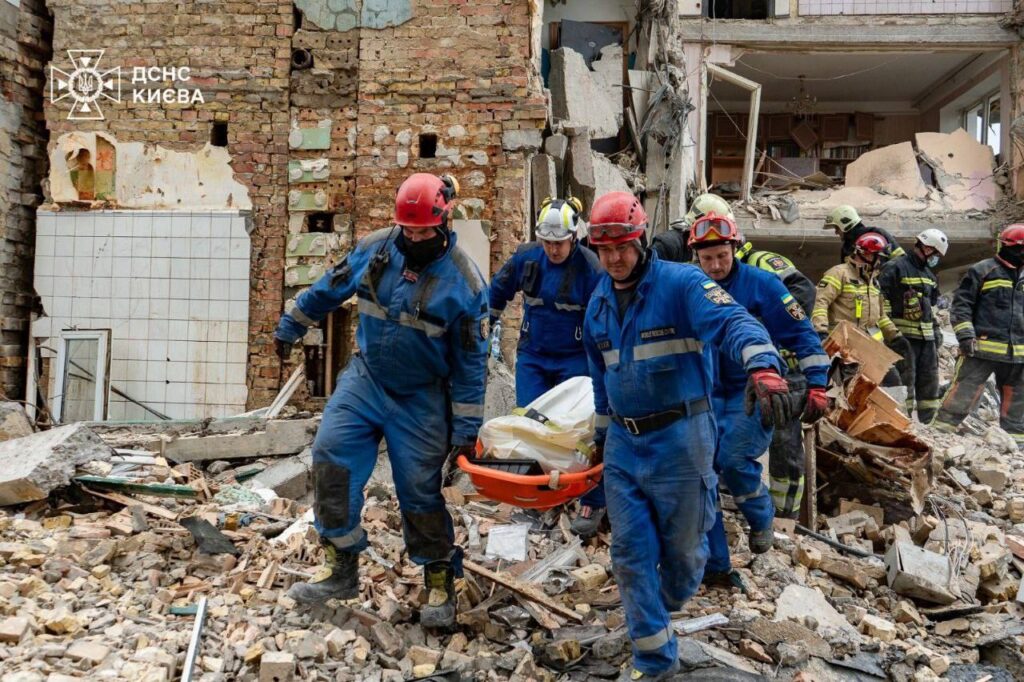
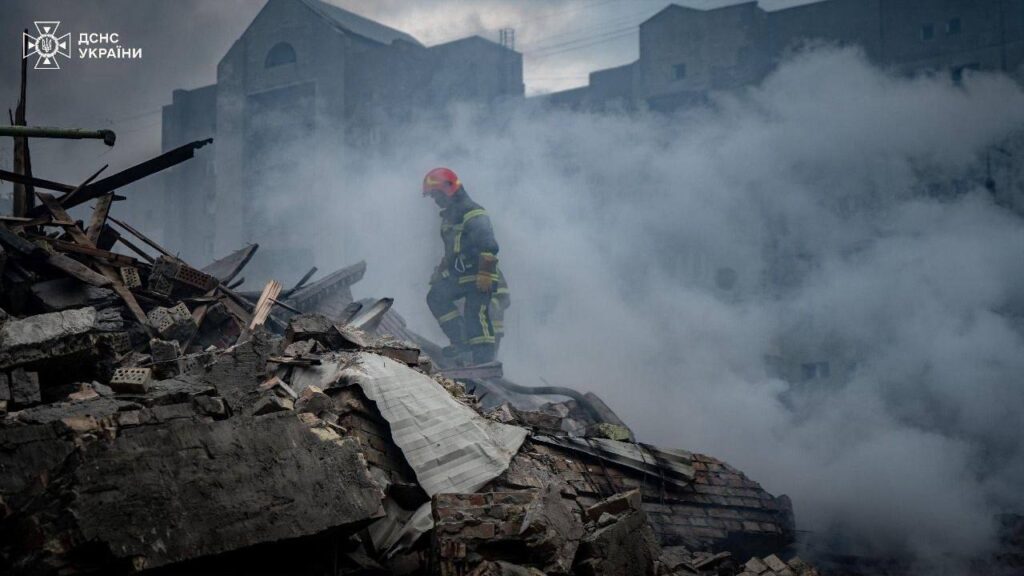
In response to the devastation, Kyiv authorities declared a day of mourning on 18 June, with flags lowered, entertainment events canceled, and the city honoring the victims.
US Embassy in Kyiv announced its participation in the city’s day of mourning for the 26 people killed in Kyiv, including one American citizen. The Embassy also characterized the 17 June Russian strike as contradicting President Trump’s calls to end the war and stop the killing.
US Embassy in Kyiv characterized the 17 June Russian strike on Kyiv as contradicting President Trump's calls to end the war and stop the killing.
— Euromaidan Press (@EuromaidanPress) June 18, 2025
The embassy announced its participation in the city's day of mourning for the 24 people killed, including one American citizen. https://t.co/ibSM0VLXSs
The attack on Kyiv was part of a broader Russian assault on Ukraine that also targeted Odesa, Zaporizhzhia, Chernihiv, Zhytomyr, Kirovohrad, and Mykolaiv oblasts. On the night of 16-17 June, Russian forces launched a total of 440 drones and 32 missiles, including cruise and ballistic types.
In Odesa, the assault killed a 60-year-old woman and injured 17 people, including a pregnant woman and a 17-year-old girl, while also damaging civilian infrastructure including residential buildings, a preschool facility, and garages.

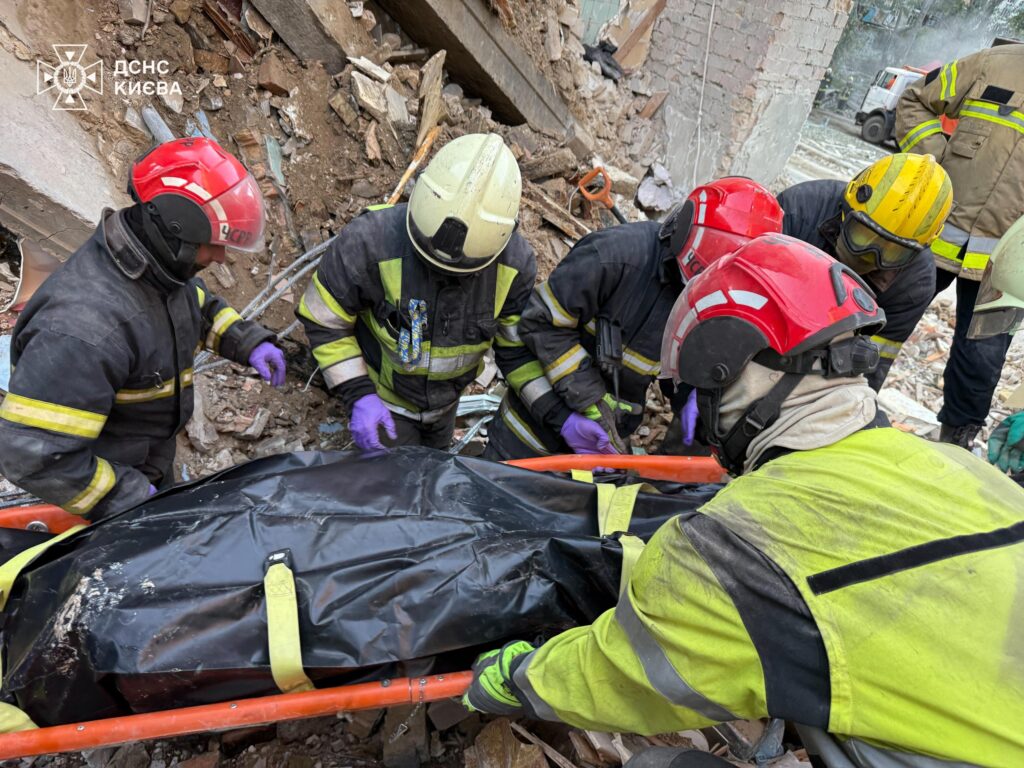
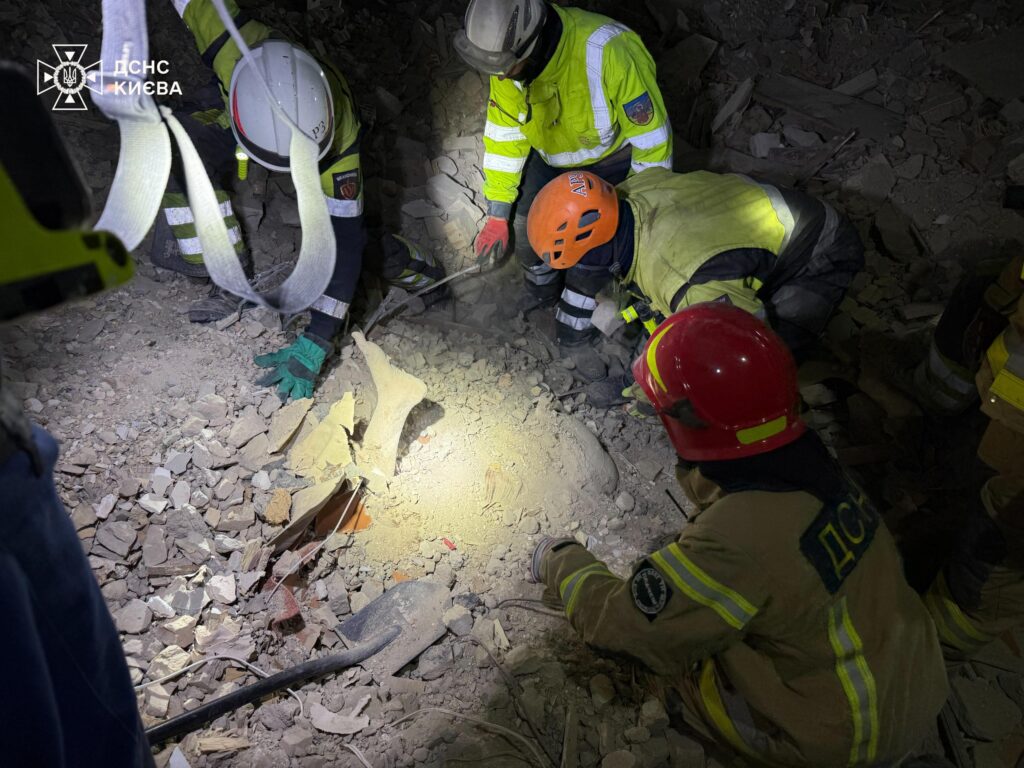


The U.S. Embassy in Kyiv on June 18 condemned Russia's massive missile and drone attack on Kyiv that killed at least 23 people and injured more than 130 a day earlier, saying it "runs counter" to U.S. President Donald Trump's peace efforts.
"Today, with all of Ukraine, we join a day of mourning in Kyiv for the victims of Russia's June 17 attack," the U.S. Embassy in Ukraine said in a statement. "We extend deepest condolences to the victims' families. This senseless attack runs counter to President Trump's call to stop the killing and end the war."
The nine-hour overnight attack, which began late June 16, has become one of the largest aerial assaults on the Ukrainian capital since the start of Russia's full-scale invasion in 2022.
Ukrainian officials said Russia launched 472 aerial weapons, including nearly 280 Shahed-type attack drones and cruise and ballistic missiles. Ukraine's air defense downed 428 targets, but several struck residential areas, including a nine-story apartment building in Kyiv's Solomianskyi district.
Among the dead was a U.S. citizen, State Department Press Secretary Tammy Bruce confirmed at a briefing on June 17.
"We are aware of last night's attack on Kyiv, which resulted in numerous casualties, including the tragic death of a U.S. citizen," Bruce said. "We condemn those strikes and extend our deepest condolences to the victims and to the families of all those affected."
President Volodymyr Zelensky called it "one of the most horrifying attacks on Kyiv" and urged stronger international support to help Ukraine defend itself.
Despite the scale of the attack, Trump appeared to be unaware of the strike when questioned by reporters aboard Air Force One early on June 17.
"When was that? When?" Trump responded when a reporter asked for his reaction. Told that the drone and missile attack had occurred "very recently," Trump said: "Just now? You mean as I’m walking back to see you, that’s when it took place? Sounds like it. I’ll have to look at it."
As of a day later, the White House had still not issued an official response to the strike.
The June 17 attack caused extensive damage across the capital. Civilian infrastructure hit included kindergartens, a university dormitory, residential neighborhoods, and industrial sites.
Fahrenheit, a Ukrainian manufacturer of military and civilian clothing, reported that its Kyiv factory was damaged and operations were suspended. Ukrposhta, the national postal service, lost two branches. Ukrainian Railways said a grain-carrying train was struck, disrupting transit.
Kyiv Mayor Vitali Klitschko said unexploded cluster munitions were found in the city — a type of weapon banned by some countries due to the danger they pose to civilians. June 18 was declared a day of mourning in Kyiv.
Foreign Minister Andrii Sybiha called the timing of the attack, as G7 leaders gathered in Canada, a deliberate message from the Kremlin. Moscow has escalated strikes on Ukrainian cities in recent weeks, targeting residential areas and critical infrastructure.
Ukraine has urged Western allies to respond by reinforcing air defense capabilities and tightening economic pressure on Russia.
 The Kyiv IndependentAnna Fratsyvir
The Kyiv IndependentAnna Fratsyvir
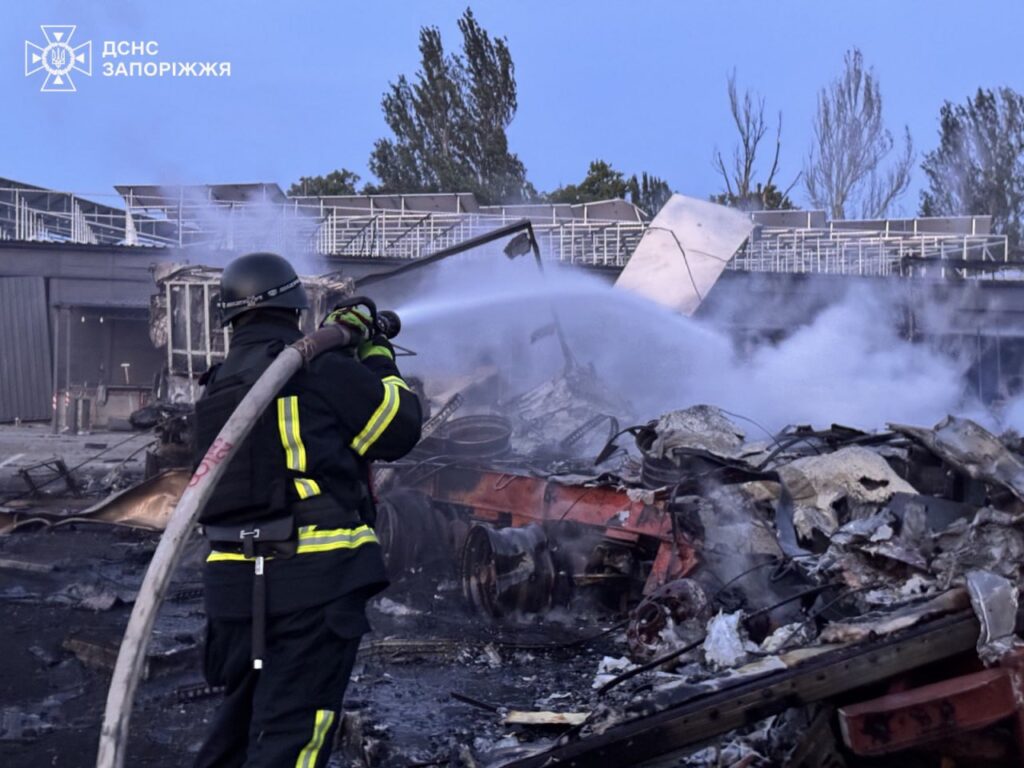
On 18 June, Russia again attacked Ukraine overnight, launching a widespread drone assault that targeted civilian and infrastructure facilities, resulting in deaths, dozens of wounded, and extensive property destruction.
According to the Air Force of the Armed Forces of Ukraine, Russian forces deployed 58 drones in their overnight assault.
Ukrainian air defense systems successfully intercepted 30 of the incoming drones by 08:30 local time. The Air Force reports that defenders used multiple methods to neutralize the threats: 12 drones were destroyed by conventional fire weapons, while 18 were either locationally lost or suppressed through electronic warfare systems.
The remaining 28 drones reached their targets, with Russian weapons striking nine separate locations across the country’s east, south, and north. The primary targets of the assault were Donetsk, Dnipropetrovsk, Kherson and Zaporizhzhia oblasts, areas that have experienced sustained attacks throughout the war.
Regional military administration head Ivan Fedorov reported that 13 drones specifically targeted Zaporizhzhia during the night assault. The attacks caused widespread damage to civilian infrastructure, with apartment building windows shattered and multiple vehicles destroyed by fire. No one was reported killed or injured.
City council secretary Rehina Kharchenko confirmed that a Nova Poshta postal service branch was completely destroyed in the bombardment.
“Instead of the building – burned structures, broken glass, melted plastic,” Kharchenko described the scene.
Ukrainian southeastern city of Zaporizhzhia was under attack overnight.
— Euromaidan Press (@EuromaidanPress) June 18, 2025
Aftermath of the Russian assault on 18 June:Nova Poshta postal facility completely destroyed (video)
47 vehicles burned in open parking area
9 apartment buildings damaged
6 non-residential… pic.twitter.com/8s4xDFCmAE
The regional emergency services department documented additional damage, reporting that 47 vehicles burned in an open parking area while fires erupted in three industrial buildings spanning a total of 800 square meters. The assessment revealed damage to nine apartment buildings and six non-residential structures from the drone strikes.
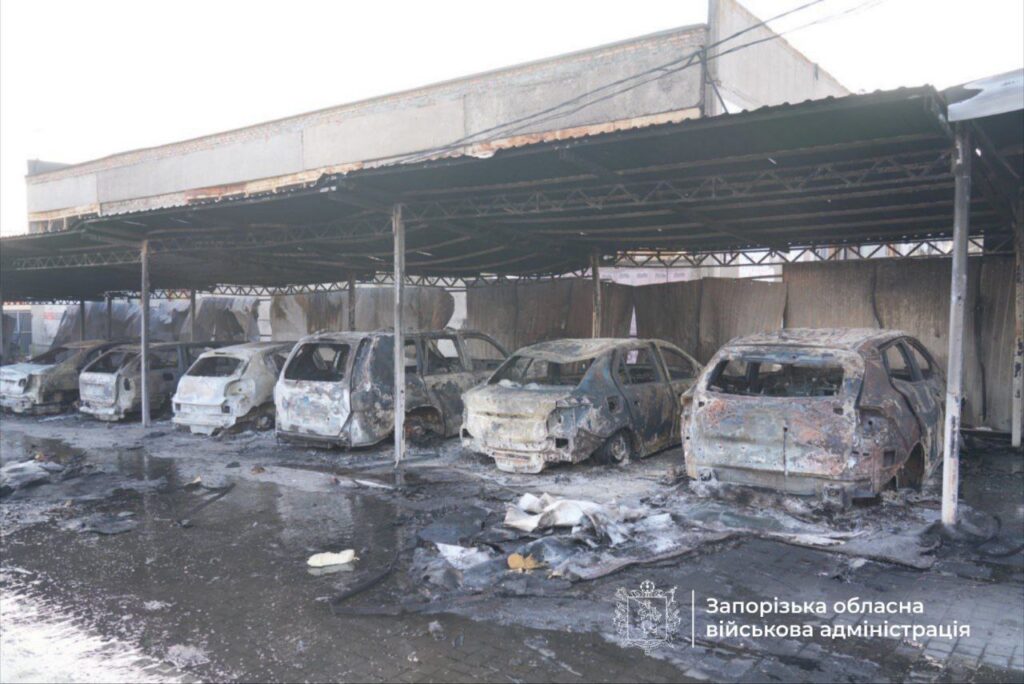

Russian forces conducted extensive shelling operations in southern Kherson Oblast throughout 17 June , resulting in two civilian deaths and 34 wounded across the region, according to Kherson Regional Military Administration head Oleksandr Prokudin.
The attacks affected 36 settlements throughout Kherson Oblast, including the regional capital. Russian forces targeted both social infrastructure and residential neighborhoods, damaging 12 private homes along with outbuildings, garages, and private vehicles.
The attacks extended to medical personnel, with Russian forces using a drone to target an ambulance in Kherson’s Korabelny district around midnight. The regional military administration confirmed that both a paramedic and emergency medical technician sustained injuries in the attack, suffering concussions, blast injuries, and closed traumatic brain injuries.

Russian attacks across Ukraine killed at least six civilians and injured at least 49, including a teenage boy, over the past day, regional authorities reported on June 18.
Russian forces launched 58 Shahed-type attack drones and decoys against Ukraine overnight, targeting mainly the Donetsk, Dnipropetrovsk, and Zaporizhzhia oblasts, the Air Force said.
Ukrainian defenses shot down 12 drones, while 18 disappeared from radars or were intercepted by electronic warfare systems, according to the statement.
In Chernihiv Oblast, a Russian drone attack against a village in the Snovsk community on June 17 injured a 68-year-old woman, Governor Viacheslav Chaus reported.
A Russian attack against Nikopol in Dnipropetrovsk Oblast on June 17 killed a 63-year-old man, Governor Serhii Lysak reported. Two more people were injured, and an educational institution and houses were damaged.
Russian attacks across Donetsk Oblast killed a civilian in Myrnohrad and injured eight others in the region, according to Governor Vadym Filashkin.
In Kharkiv Oblast, three people were injured in Russian attacks, including a 69-year-old woman and a 15-year-old boy in Izium and a 52-year-old man in Ripky, Governor Oleh Syniehubov reported.
Russian attacks against Kherson Oblast killed two people and injured 34, according to the regional governor, Oleksandr Prokudin.
In Sumy Oblast, one person was killed and another injured in a Russian drone attack against the Bilopillia community, and another man was killed during an air strike against the Yunakivka community, the regional administration reported.
Russia launched missile and drone attacks against Zaporizhzhia, damaging multiple residential and non-residential buildings but inflicting no casualties, Governor Ivan Fedorov said.
 The Kyiv IndependentKateryna Denisova
The Kyiv IndependentKateryna Denisova
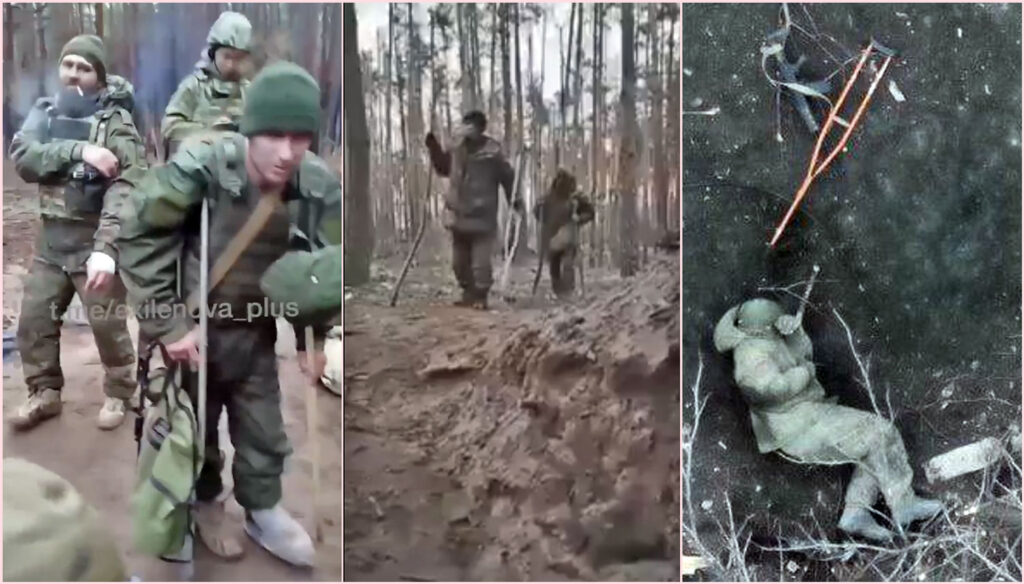
The UK’s Defense Ministry reports in its intelligence update a dramatic increase in the number of artificial limbs issued in Russia, suggesting rising battlefield injuries and growing strain on the country’s medical services.
Open-source data cited by the Ministry’s 17 June update points to a 53% increase in artificial limbs issued in Russia in 2024 compared to the previous year. The figures, reportedly sourced from Russia’s Ministry of Labor, indicate that around 152,500 prosthetic limbs were provided to individuals with disabilities last year. Notably, arm prosthetics saw a 75% surge in issuance. During the same period, wheelchair distribution also climbed by 18%, reflecting a broader rise in mobility-related disability cases.
The update referred to earlier reporting by the independent Russian media outlet Verstka. According to that report, Russian soldiers with amputated limbs had been left waiting for extended periods before receiving necessary prosthetics.
UK Defense Intelligence assessed that Russia is “almost certainly failing to provide necessary combat medical treatment at the front line.” The update noted that this failure contributes to “a greater number of serious long-term injuries amongst Russian soldiers.” It also stated that the significant rise in the number of Russian men with disabilities, along with other wounded personnel, “will almost certainly have a detrimental long-term impact on both medical and social services in Russia.”

U.S. President Donald Trump was unaware of a deadly Russian drone and missile strike on Kyiv that killed at least 15 people and injured over 120, when asked about the attack by reporters on June 17.
On board Air Force One as he flew back from Canada, Trump was questioned about the attack by a reporter. A clock in the plane shows it was shortly after 1:30 a.m. Washington time, 8:30 a.m. Kyiv time, two-and-a-half hours after the nine-hour-long attack ended, and after reports of casualties had been made public.
When asked for his reaction, he responded: "When was that? When?"
The reporter then says the "Russian drone attack on Kyiv" occurred "very recently."
"Just now? You mean as I’m walking back to see you, that’s when it took place? Sounds like it. I’ll have to look at it," Trump replies.
At the time of writing some seven hours later, the White House has still yet to comment on the attack.
The comments came a few hours after Ukraine endured the largest aerial attack on Kyiv in 2025. According to Ukraine's Air Force, Russia launched 472 aerial weapons overnight, including nearly 280 Shahed-type attack drones, 16 Kh-101 cruise missiles, two Kinzhal ballistic missiles, and other guided munitions, primarily targeting the capital.
Air defenses downed 428 of them, including 239 Shaheds and 15 cruise missiles, while at least one Kinzhal was intercepted.
The almost nine-hour assault killed 15 people and injured 124, according to local authorities. A nine-story residential building in the Solomianskyi district was struck and partially collapsed, killing residents.
Kyiv Mayor Vitali Klitschko said cluster munitions were discovered in the city, a type of weapon banned under international conventions due to their indiscriminate nature and long-term threat to civilians. June 18 has been declared an official day of mourning in Kyiv.
President Volodymyr Zelensky called the strike "one of the most horrifying attacks on Kyiv" and urged international partners to respond decisively. Foreign Minister Andrii Sybiha said the timing of the strike, as G7 leaders meet, was a deliberate message from the Kremlin.
Civilian sites hit in the capital include kindergartens, residential areas, a university dormitory, and production facilities. Ukrainian manufacturer Fahrenheit, which produces military and civilian clothing, announced its factory was damaged and all orders suspended indefinitely. Ukrposhta, the national postal service, lost two branches. A Ukrainian Railways train carrying grain was also struck, temporarily halting traffic.
Russia has escalated attacks on Ukrainian cities in recent weeks, including mass strikes on energy infrastructure and residential areas.
 The Kyiv IndependentChris York
The Kyiv IndependentChris York

© Abdel Kareem Hana/Associated Press
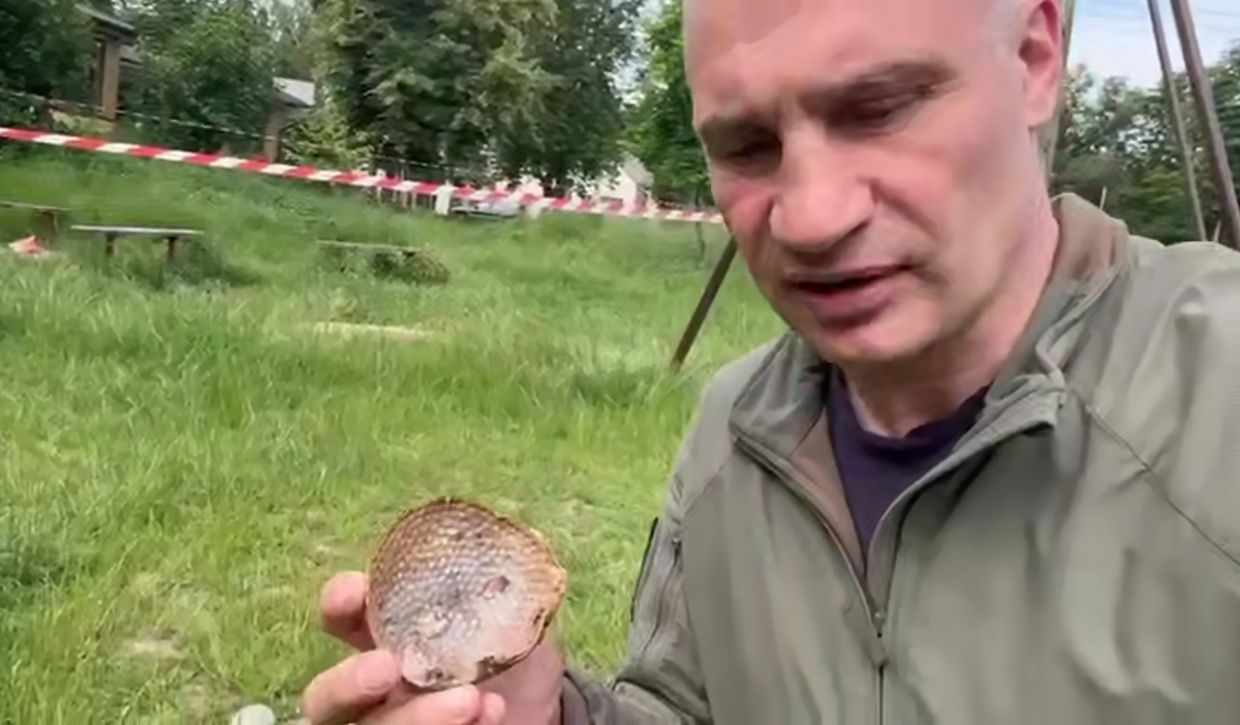
Emergency services in Kyiv have recovered fragments of cluster munitions following the overnight Russian missile and drone attack on June 17, Mayor Vitali Klitschko reported, calling it further evidence of Russia's "genocide" against Ukrainians.
"In the capital's Nyvky neighborhood, emergency workers are now finding these kinds of cluster munition parts," Klitschko said in a statement shared on social media. "Another clear sign of the genocide Russia is committing against Ukrainians."
Cluster munitions are banned under international law by more than 100 countries due to their indiscriminate nature and the long-term threat they pose to civilians, especially when unexploded submunitions remain hidden in residential areas.
While Russia and Ukraine are not signatories to the Convention on Cluster Munitions, international humanitarian organizations have repeatedly condemned the use of such weapons in populated areas. Ukraine uses cluster munitions on the battlefield against Russian forces.
The mayor's comments came hours after one of the largest and deadliest attacks on the Ukrainian capital in months, in which at least 15 people were killed and nearly 100 injured. The Russian strike, which lasted nearly nine hours, included waves of kamikaze drones, ballistic missiles, and what authorities now confirm were banned explosive parts.
President Volodymyr Zelensky called the assault "one of the most horrifying attacks on Kyiv," saying more than 440 drones and 32 missiles were launched across Ukraine overnight.
"Such attacks are pure terrorism," he said in a statement on social media. "And the whole world, the U.S., and Europe must finally respond as civilized societies respond to terrorists."
Zelensky confirmed that damage had been reported in eight districts of Kyiv, with emergency workers still searching for survivors beneath the rubble of a destroyed apartment block.
He added that strikes also hit Odesa, Zaporizhzhia, Chernihiv, Zhytomyr, Kirovohrad, Mykolaiv, and Kyiv regions. "Fifteen people are confirmed dead. My condolences to their families and loved ones," Zelensky said.
Foreign Minister Andrii Sybiha also condemned the attack, calling it a "massive and brutal strike" timed deliberately to coincide with the G7 summit, which is taking place in Canada on June 16-17.
 The Kyiv IndependentLucy Pakhnyuk
The Kyiv IndependentLucy Pakhnyuk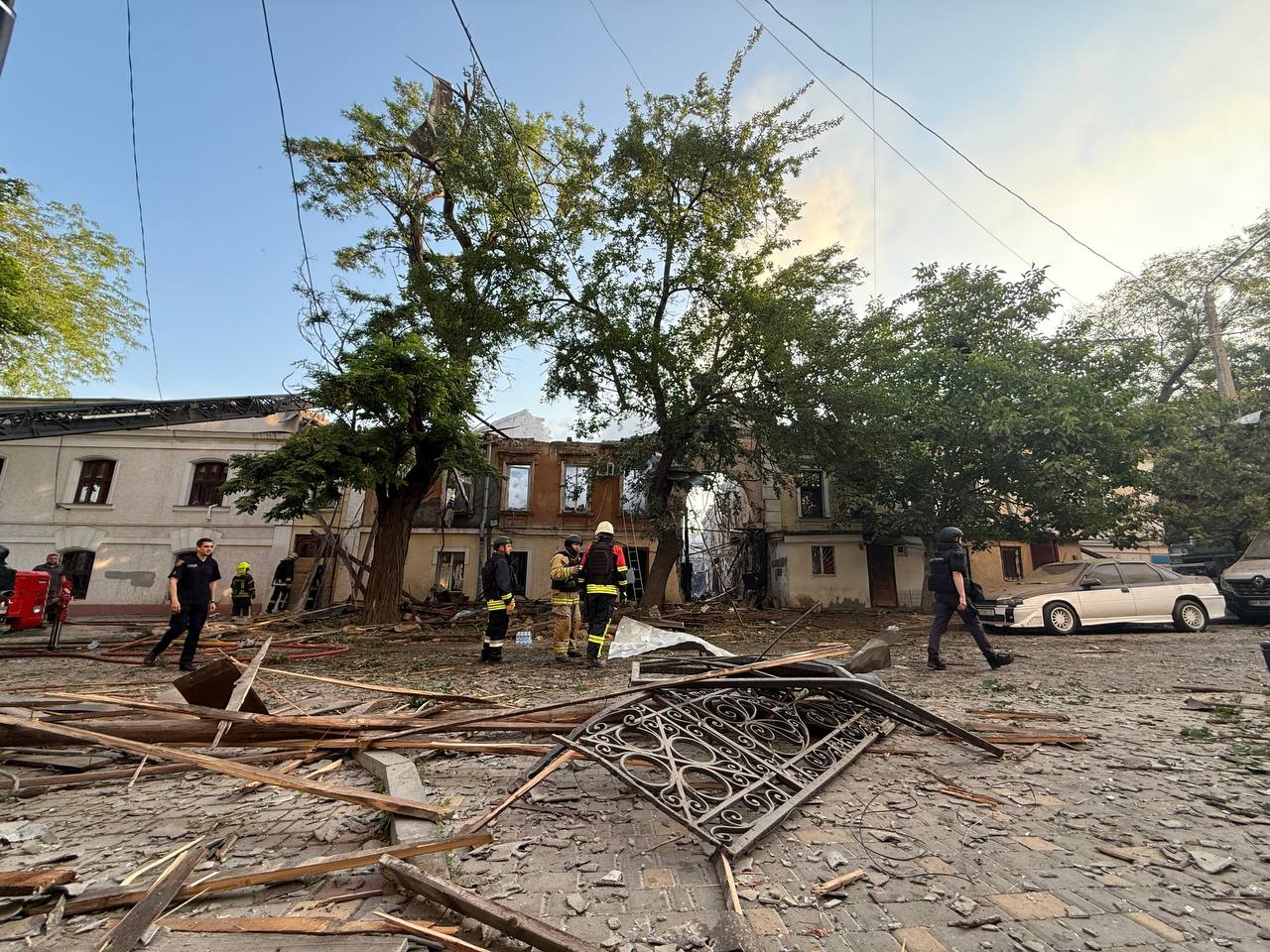
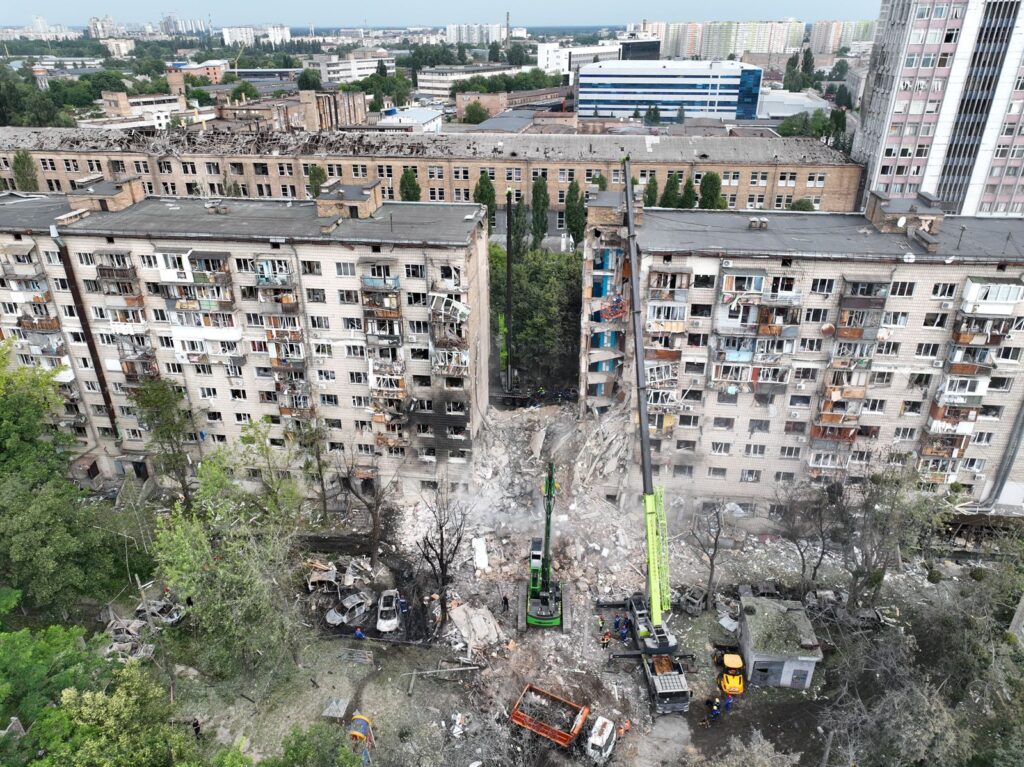
Russia continues its daily air attacks against Ukrainian residential neighborhoods, injuring civilians. In the early hours of 17 June, Russia launched a massive combined air attack on Ukraine, hitting Kyiv and other Ukrainian cities. President Volodymyr Zelenskyy called the strike “one of the most terrible attacks on Kyiv” and confirmed that a total of more than 440 drones and 32 missiles were launched overnight. According to him, Odesa, Zaporizhzhia, Chernihiv Oblast, Zhytomyr Oblast, Kirovohrad Oblast, Mykolaiv Oblast, and Kyiv Oblast were also targeted. As of 9:30, Kyiv authorities confirmed 14 dead and more than 100 injured. In Odesa, the oblast administration reported 1 person killed and 17 injured in the strike.
Kyiv’s air raid alert began at 21:14 on 16 June and lasted until 6:06 on 17 June. The first explosions occurred at midnight. Initial reports at 2:40 confirmed 16 injuries, mainly in the Solomianskyi district. Later, injuries were also reported in the Dniprovskyi and Darnytskyi districts, according to Mayor Vitali Klitschko.
By 6:54, over 40 people were confirmed injured, more than 30 of them hospitalized. At 9:29, the Kyiv City Military Administration reported 99 confirmed injuries, later updating the number to 104. Of those, 59 were hospitalized.

Among the dead was a 62-year-old US citizen, who died in the Solomianskyi district. Klitschko stated that the man died “in front of a house where medics were helping other people injured by the shelling.”
In Kyiv, a nine-story residential building was struck in the Solomianskyi district, with an entire section of the building destroyed “down to the basement,” according to Interior Minister Ihor Klymenko. Emergency services were still searching the rubble for survivors.

Infrastructure damage included destroyed buildings in eight districts of the city. The Kyiv Aviation Institute reported that its dormitory No. 10 was hit by a drone. Three other dormitories suffered shattered windows from the blast wave. A kindergarten was damaged in the Darnytskyi district. Public transport was affected, with tram routes No. 15 and 22 halted and traffic blocked on Boryspilska Street, according to the Kyiv City State Administration.
This was one of the most extensive Russian air assaults on Kyiv in recent months. The Kyiv City Military Administration reported that Russia used 175 drones, over 14 cruise missiles, and at least two ballistic missiles, deliberately targeting civilian housing in Kyiv.
Просто по житлових будинках.
— monitor (@war_monitor_ua) June 17, 2025
Київ
07:49 17.06.25 pic.twitter.com/uQTx8nlZq5
Ukrainian President Volodymyr Zelenskyy wrote on Telegram that “such attacks are pure terrorism” and urged the international community to respond accordingly.
“Russia destroyed an entire section of a residential building. Buildings in eight districts of Kyiv were damaged. Work continues at all impact sites. All victims are receiving the necessary help. At this time, 15 people are reported dead. My condolences to the families and loved ones,” he posted.
He continued:
“Putin does this only because he can afford to continue the war. He wants war to continue. It is bad when the powerful of this world turn a blind eye to this. We are in contact with all partners at all possible levels so there is a proper response. These terrorists must feel pain, not peaceful, normal people.”
In Odesa, 17 people were injured, and one woman was killed. According to Odesa Oblast Military Administration official Oleksandr Kharlov, a 60-year-old woman was missing after failing to respond to the air raid alert. Later reports confirmed that her body was found under the rubble. Kharlov also said another person was being searched for at a different location.

Among the injured were a pregnant woman and a 17-year-old girl. One person was hospitalized; others were treated on an outpatient basis. Damage in the city included residential buildings, an inclusive education center, a preschool, and private garages.
In Zaporizhzhia, a missile damaged a multi-story apartment building and a dormitory. Regional head Ivan Fedorov reported that over 50 apartments had windows blown out by the blast wave. No casualties were reported.
Ukraine’s Air Force says Russia used 440 drones and 32 missiles in deadly overnight attack against Ukraine. Of those, air defenders neutralized 402 drones and 26 missiles.
Russia targeted Ukraine with 440 drones and 32 missiles in deadly overnight attack, Ukrainian Air Force says
Kyiv Mayor Vitali Klitschko confirmed that three people were killed in Darnytsia District as a result of the large-scale Russian air assault on the city. By 10:05, medical services had received 114 victims, with 68 hospitalized and the rest treated on-site.
The city declared 18 June as a Day of Mourning, during which flags on all municipal buildings will be flown at half-staff, and entertainment events are banned.

Search-and-rescue efforts continue in Solomyanskyi District, where emergency crews are still working through the rubble, according to Klitschko.
It remains unclear whether the newly confirmed fatalities are part of the 14 earlier reported by the Kyiv City Military Administration. The injury count has risen from a previous 104.
Interior Minister Ihor Klymenko reported that 27 locations across Kyiv came under attack overnight on 17 June. The strikes damaged residential buildings, educational facilities, and critical infrastructure.
Klymenko stated,
“We received information about at least five missing residents of the building. Rescuers will clear the rubble until we are sure that everyone is safe and receiving help.”
The State Emergency Service of Ukraine said 296 rescuers and 75 vehicles are currently involved in response efforts across the city.
Foreign Minister Andrii Sybiha called the attack a deliberate Russian act to coincide with the ongoing G7 summit in Canada.
Writing on X, Sybiha said Russia does this on purpose to send a signal of total disrespect to the US and other partners, while “pretending to seek diplomatic solutions.”
This night, Russia launched a massive and brutal strike against Ukraine. Hundreds of drones and missiles targeting civilians. Kyiv suffered particularly severe attacks.
— Andrii Sybiha
Putin does this on purpose, just during the G7 summit. He sends a signal of total disrespect to the United… pic.twitter.com/4XHoKWPu3R(@andrii_sybiha) June 17, 2025
CEO of Ukrzaliznytsia railway company CEO Oleksandr Pertsovskyi reported damage to freight cars carrying grain in Kyiv following the night’s missile and drone strikes. However, he assured that operations would be swiftly restored and train schedules would not be affected.
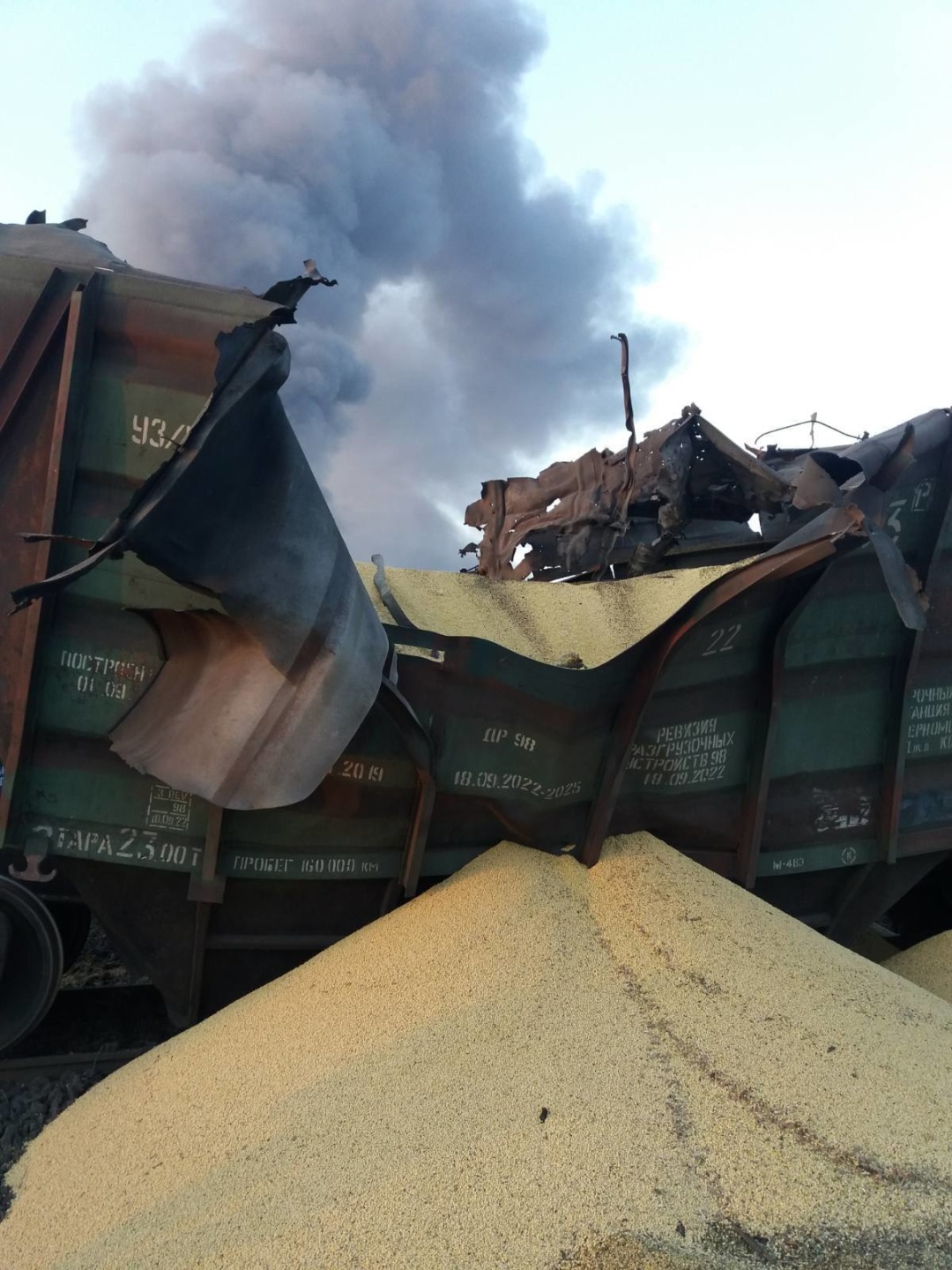
National postal operator Ukrposhta also suffered damage, with two branches—No. 03124 and No. 03126—destroyed. According to CEO Ihor Smilianskyi, a new branch is expected to start operating at an alternate address by 18 June.
Energy company DTEK reported that 1,148 Kyiv residents were left without electricity as a result of the Russian strikes.

Editor's note: This is a developing story and is being updated.
Russian drone strikes on Odesa early June 17 killed 2 people and injured 17 others, including a pregnant woman and a child, regional authorities said.
The body of a 60-year-old woman was recovered from the rubble of a collapsed building, along with the remains of another woman born in 1947, Odesa Oblast Prosecutor's Office reported.
"My sincere condolences to her family and loved ones," Odesa Oblast Governor Oleh Kiper wrote.
One person remains hospitalized as of 9 a.m., while the rest of the injured are receiving outpatient treatment.
The strike damaged multiple residential buildings in Odesa’s historic city center, as well as a kindergarten and an inclusive support center. Emergency services and volunteers continue clearing debris and responding to the aftermath.
The attack also damaged civilian infrastructure across the city, including residential buildings.
Emergency services and volunteers are working at the scene to clear debris.
Overnight, Russia also launched a mass attack on Kyiv, injuring at least 18 people.
Odesa, a port city on Ukraine’s Black Sea coast with a population of around 1 million, has been a frequent target of Russian attacks throughout the full-scale war.
 The Kyiv IndependentLucy Pakhnyuk
The Kyiv IndependentLucy Pakhnyuk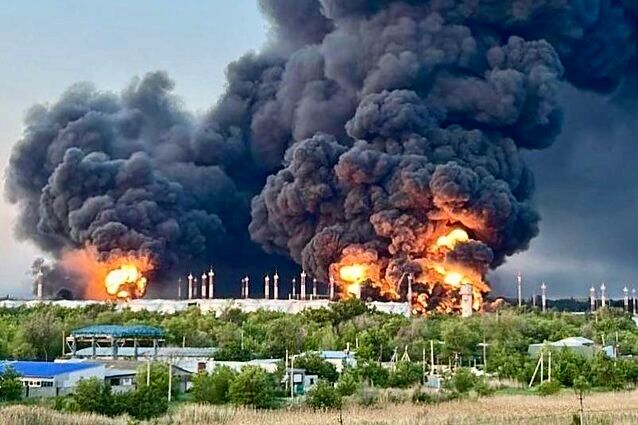

Ukrainian actor-turned-soldier Yurii Felipenko was killed in action at age 32. On 15 June, his wife, YouTube show host Kateryna Motrych, announced his death on social media, stating that her husband had been her “world, soul, and light” and describing the loss as devastating.
Felipenko was originally from Zaporizhzhia, a southeastern Ukrainian city close to the front line and under constant Russian bombardment since 2022.
The actor began his screen career in 2014, appeared in numerous famous Ukrainian TV series and also performed extensively at Kyiv’s Academic Drama Theater. His transition from entertainment to military service reflects the broader mobilization of Ukrainian civilians across various professions.
Ukrainian actor-turned-drone operator Yurii Felipenko was killed in combat at age 32.
— Euromaidan Press (@EuromaidanPress) June 15, 2025
Yurii appeared in numerous Ukrainian TV series and performed at Kyiv's Academic Drama Theater. He voluntarily joined the 429th "Achilles" unmanned systems regiment in 2024.
On 15 June, his… pic.twitter.com/oAOQLJNuDD
Yurii served as a drone operator with the 429th separate “Achilles” unmanned systems regiment after voluntarily joining the military in 2024. His role involved operating drones, a critical component of modern warfare. The exact cause of his death in combat is yet unknown.
“Yura is gone. Yura was, without exaggeration, my world, my soul, my light. It’s impossible to convey this loss. I feel like I’ve been destroyed,” his wife Kateryna wrote on Instagram.


© Avishag Shaar-Yashuv for The New York Times

Editor's note: This story has been updated to reflect the most recent casualty numbers.
Russia attacked Ukraine with nearly 200 missiles and drones and shelled residents in Kherson and Donetsk oblasts, killing one and injuring three, Ukrainian authorities reported on June 15.
Russian forces unleashed drones, artillery, and airstrikes on Kherson Oblast and the city over the last day, killing one person and injuring seven, the oblast administration reported. Russian attacks damaged apartments, homes, and gas pipelines, as well as other infrastructure.
In Donetsk Oblast, Russian attacks injured two people in Pokrovsk and Myrnohrad, regional governor Vadym Filashkin reported.
Russia’s combined mass missile and drone strikes largely targeted Kremenchuk in Poltava Oblast. No one was injured or killed, but the attacks hit energy and agricultural facilities, said Poltava governor Volodymyr Kohut.
Of 183 drones Russia launched, Ukrainian air defense neutralized 159, the Air Force said in their morning update. Ukraine also shot down 2 Kinzhal air-launched ballistic missiles and six out of eight cruise missiles.
Drones were also spotted flying through Kyiv and Kyiv Oblast, Chernihiv, Sumy, Dnipropetrovsk, Kirovohrad, Mykolaiv, Zaporizhzhia, and Donetsk oblasts.
Despite talks of peace negotiations, Russia has amped up its drone attacks on Ukraine over the last month. On May 26, Russia launched 355 drones at Ukraine, a record that was broken on June 1 with 472 drones, and on June 9, when Russia fired 479 drones and 20 missiles against Ukrainian cities.
 The Kyiv IndependentYuliia Taradiuk
The Kyiv IndependentYuliia Taradiuk

© Amit Elkayam for The New York Times

© Amit Elkayam for The New York Times

As part of a painful but vital repatriation process, Ukraine has reportedly received another 1,200 bodies of fallen soldiers from Russia, part of an agreement brokered in Istanbul, the Coordination Headquarters for the Treatment of Prisoners of War (CHTPW) announces.
The return is part of an agreement reached in Istanbul on 2 June, which provides for the exchange of 6,000 bodies on each side. No other deal was reached at the talks regarding a ceasefire or the end of the war.
This exchange follows two earlier repatriations on 13 June and 11 June, during which 1,200 and 1,212 bodies, respectively, were returned to Ukraine.
According to Defense Minister Rustem Umerov, who led the Ukrainian delegation in Istanbul, this exchange symbolizes a necessary step toward restoring dignity to fallen defenders.
“An agreement was reached to return 6,000 bodies of fallen soldiers in exchange for 6,000,” he explains.
In the coming days, Ukrainian law enforcement, forensic teams from the Ministry of Internal Affairs, and other agencies will conduct examinations and procedures to return names to those unidentified.
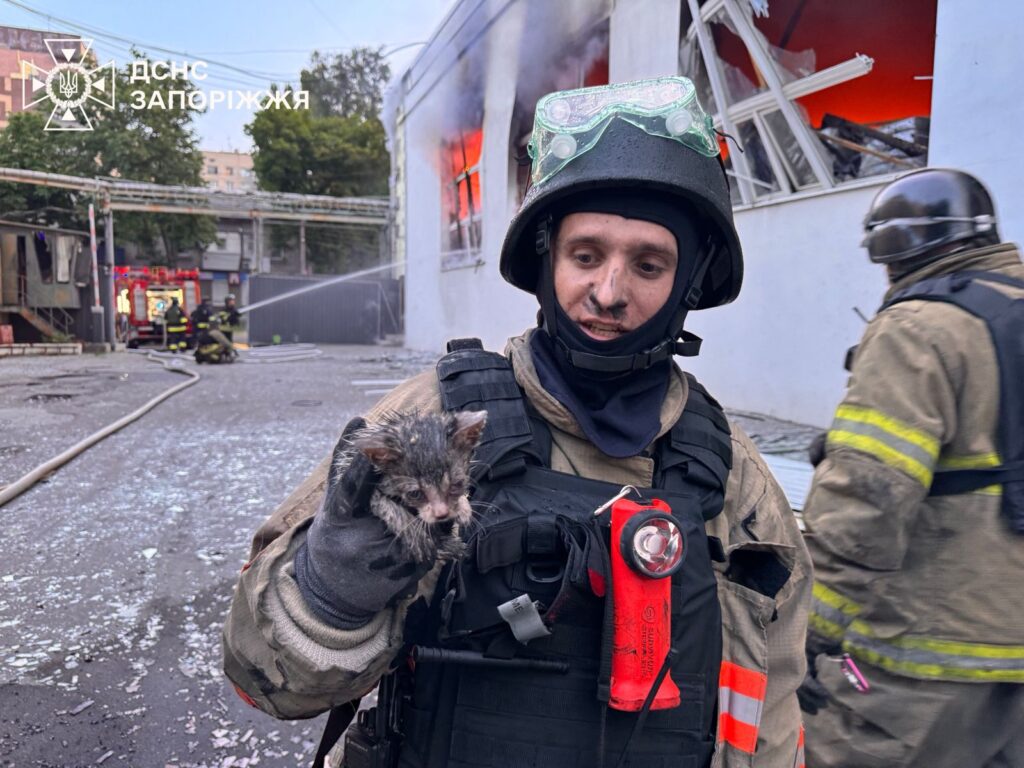
In the early hours of 14 June, Russian forces launched a large-scale drone attack on Ukraine, deploying 58 Shahed-type drones, the Ukrainian Air Force reported. Air defenses neutralized 43 of them, including 23 shot down by fire and 20 suppressed or lost from radar through electronic warfare. Hits were recorded in nine locations, and drone debris fell in at least five. The Russian drones injured three people in Zaporizhzhia Oblast, while other attack hurt more people in Donetsk and Kherson oblast, according to local authorities.
According to the Zaporizhzhia Oblast Military Administration, 14 Shahed drones targeted Zaporizhzhia. The strikes hit residential buildings, a public transport stop, and a store. A humanitarian aid warehouse was destroyed.
NGO head Oleksandr Belyuha told Suspilne,
“This is our main warehouse. We’ve been helping people for three years. We provided humanitarian aid: food, hygiene products. Now everything is destroyed.”
Emergency services responded to fires that broke out in vehicles, multiple buildings, and the warehouse. Over ten cars burned in a parking area. At least 15 apartment blocks, one-family homes, and non-residential buildings were damaged.
In Izium, Kharkiv Oblast, Russian drones caused four direct hits overnight on 14 June. The City Military Administration reported shattered windows, blown-off doors, and damage to garages in both residential and administrative structures.
However, Kharkiv Oblast authorities confirmed that there were no injuries over the past 24 hours despite attacks on five settlements. The region came under varied weaponry, including six KAB guided bombs, one FAB-1500 bomb, four Shahed-136 drones (which the oblast administration, for some reason, persistently calls by their Russian designation, Geran-2), and one FPV drone.
Putin counting on US fatigue to win what his army cannot, WP op-ed argues
Russian forces struck Sumy Oblast nearly 70 times between the mornings of 13 and 14 June, according to the Sumy Oblast Military Administration. The attacks targeted 21 settlements in nine communities. Most occurred in Sumy Raion. Weapons included around 30 drone-dropped VOG grenades and almost 10 air-dropped KAB bombs.
Two households were damaged in a strike on Pishchane, as confirmed by local official Mykola Sachenko. No casualties were reported.
WSJ: Russia wants the West to believe it’s winning in Ukraine
Various Russian attacks targeted Kherson Oblast, with 23 under fire in the past 24 hours. Oblast head Oleksandr Prokudin reported on 14 June that five people were injured. Airstrikes and artillery fire damaged an apartment building, six one-family homes, a gas station, a gas pipeline, a garage, and vehicles.
According to Donetsk Oblast authorities, Russian strikes resulted in one death and two injuries on 13 June.

Editor's note: This story has been updated to include the latest injury figures confirmed by Zaporizhzhia Governor Ivan Fedorov.
At least three people were killed and 11 injured in Russian attacks across Ukraine over the past day, Ukrainian officials said on June 14.
According to Ukraine's Air Force, Russia launched 58 attack drones, primarily Shahed-type UAVs, and decoys from multiple directions. Air defenses destroyed 43 of the drones.
In Donetsk Oblast, one civilian was killed and two others were injured in Russian shelling of Yablunivka, Governor Vadym Filashkin said. Russian forces attacked settlements in the region 27 times over the past day.
In Kherson Oblast, five people were injured as Russia struck 23 settlements with drones, artillery, and airstrikes, Governor Oleksandr Prokudin reported. Residential buildings in Kherson city, Antonivka, and other towns were damaged, including a multi-story apartment block, six houses, a gas station, and some vehicles.
In Zaporizhzhia Oblast, at least one person was killed and four others injured in attacks targeting Zaporizhzhia and Polohy districts, Governor Ivan Fedorov said. Russian forces launched 438 strikes on 16 settlements, including 11 airstrikes and 266 drone attacks, mainly using FPV (first-person view) drones.
In a morning strike on Zaporizhzhia, more than 10 cars were burned at a parking lot, and at least 15 buildings were damaged. One person was injured.
According to Radio Free Europe/Radio Liberty, the Russian attack also destroyed a humanitarian aid warehouse in Zaporizhzhia. Over 100 metric tons of humanitarian supplies reportedly burned in the fire. The aid had recently arrived in five trucks and was intended for displaced people and residents of front-line areas. The damage is estimated at around $3 million.
 The Kyiv IndependentTim Zadorozhnyy
The Kyiv IndependentTim Zadorozhnyy
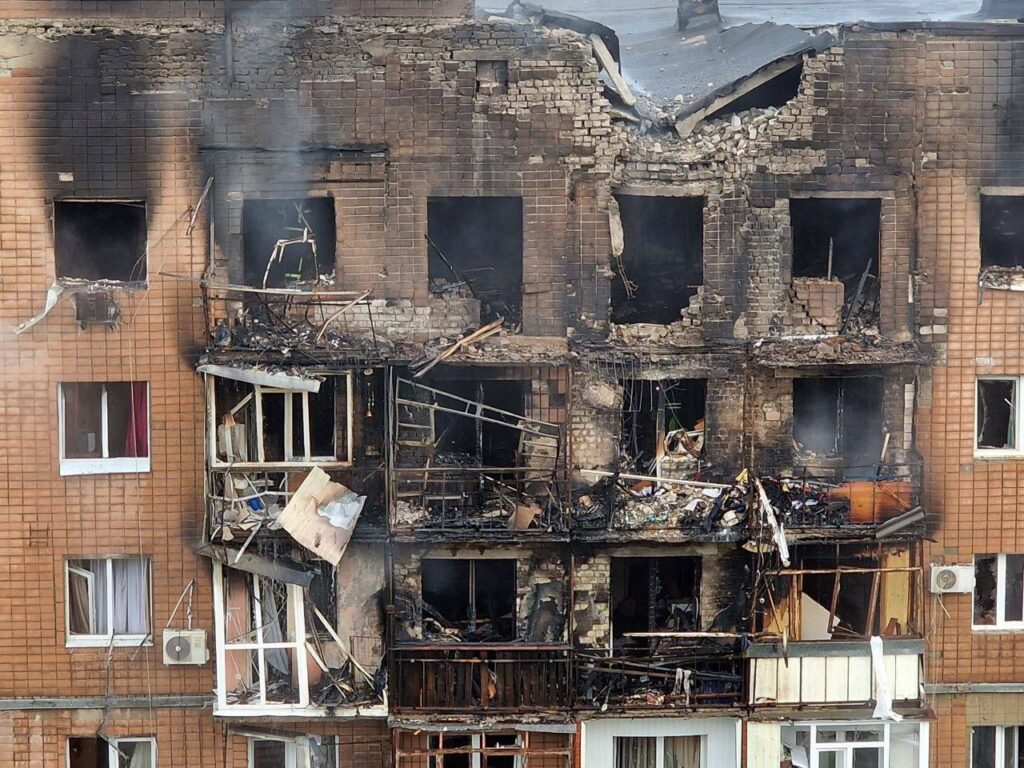
Search and rescue workers in Kharkiv have recovered the body of the sixth and final victim of a Russian attack carried out overnight on 7 June, concluding a multi-day search operation, according to Kharkiv Mayor Ihor Terekhov’s 12 June report.
Authorities located the body of a missing civilian employee trapped under rubble in the Kyivskyi district of Kharkiv City, where a Russian strike targeted a civilian enterprise five days before. Mayor Terekhov confirmed the recovery and declared the search operation officially concluded.
The victim had been listed as missing since the Russian attack, which involved a mix of drones, KAB guided bombs, and at least one missile, launched against the city overnight into 7 June.
Two additional bodies were recovered from the rubble on the morning of 12 June. Prior to that, the body of the first confirmed victim was found on 10 June, with others discovered over the following days.
Body recovered in Kharkiv after Russia’s 7 June attack, five still missing
According to initial reports, six civilian employees were believed to be trapped under the collapsed structure after the airstrike. All six have now been confirmed dead.
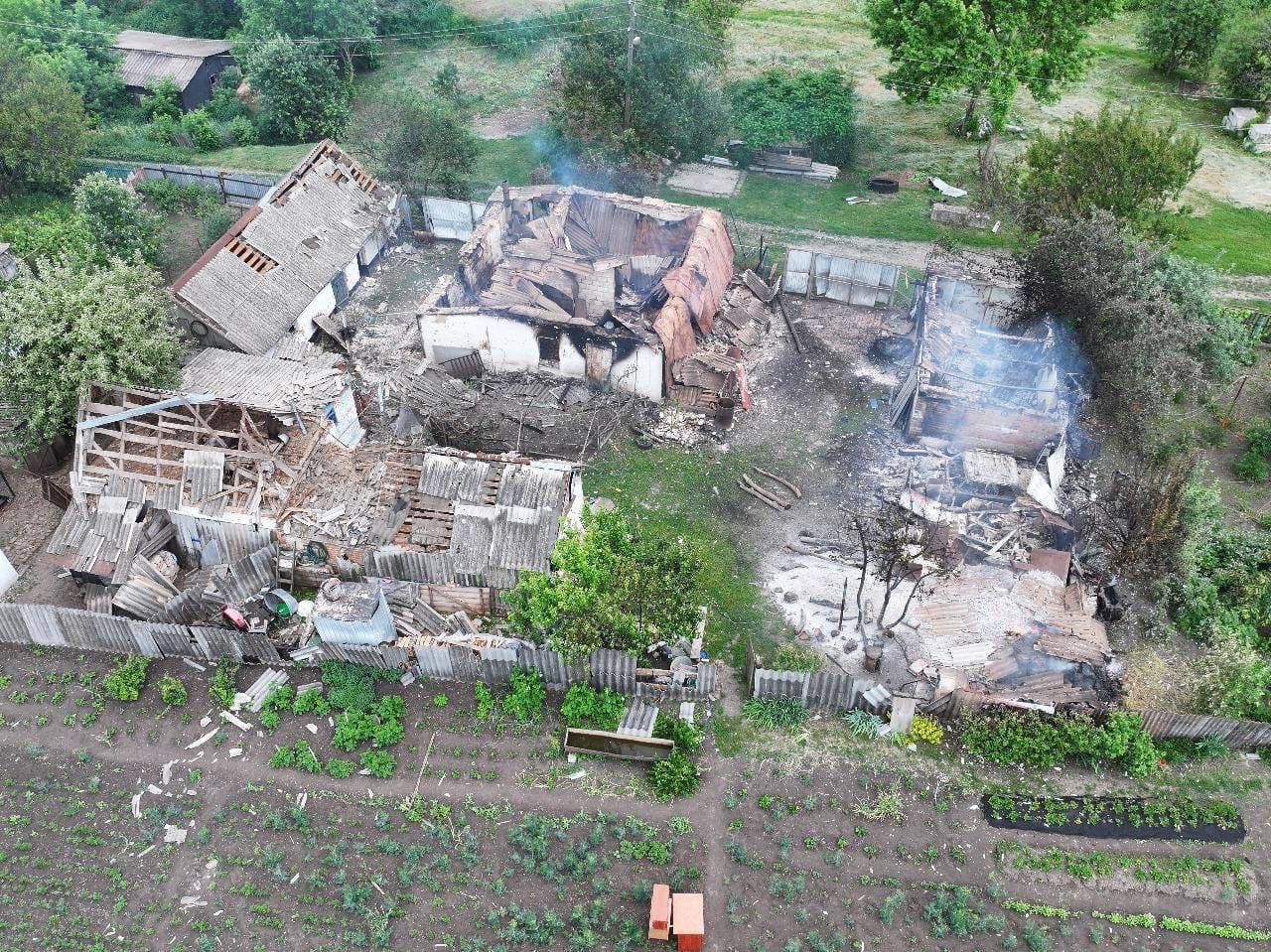
At least four civilians were killed and 24 injured over the past day in Russian attacks across Ukraine, Ukrainian officials said on June 13.
According to the Ukrainian Air Force, Russia targeted the country with 55 Shahed-type attack drones and decoy unmanned aerial vehicles (UAVs), as well as four Iskander-M/KN-23 ballistic missiles launched from Russian territory.
Ukraine's air defenses shot down 28 drones, while 15 were intercepted by electronic warfare or disappeared from radars.
In Kherson Oblast, Governor Oleksandr Prokudin said Russian troops shelled and launched drone and air strikes on dozens of settlements, including Kherson city. The attacks hit residential areas and critical infrastructure, damaging four apartment buildings and 13 houses. One person was killed and seven were wounded.
In Kharkiv Oblast, Governor Oleh Syniehubov reported that seven civilians were injured, including an 11-year-old child, during Russian attacks on seven settlements. Russian forces used 16 unguided rockets, six guided bombs, and over 20 drones, including Shaheds and first-person view (FPV) units. Civilian infrastructure, including houses and factory buildings in Kupiansk, Izium, and Bohodukhiv districts, sustained significant damage.
In Sumy Oblast, two people were injured when a Russian drone struck civilian infrastructure in the Mykolaivka community, regional officials said. Over the past 24 hours, Russia carried out more than 50 attacks on 25 settlements using FPV drones, multiple-launch rocket systems, and guided bombs.
In Zaporizhzhia Oblast, Governor Ivan Fedorov said one person was killed and three injured in Russian attacks on the region. Russian forces launched nearly 500 strikes across the region, including 283 drone attacks, mainly FPV types, and 10 air strikes.
In Donetsk Oblast, Governor Vadym Filashkin said two civilians were killed, while five others were injured across the region.
 The Kyiv IndependentDmytro Basmat
The Kyiv IndependentDmytro Basmat

Russian independent media outlet Mediazona, in collaboration with the BBC Russian service, has confirmed the identities of 111,387 Russian military personnel killed in Ukraine.
The publications' latest report covers the period of February 24, 2022 to June 6, 2025. Since it was last updated at the end of May, 1,762 additional Russian military personnel have been confirmed killed.
The journalists note that the actual figures are likely significantly higher, as their verified information comes from public sources such as obituaries, posts by relatives, memorial community tree-plantings, regional media reports, statements from local authorities, among other sources.
The outlet published the complete list of identified casualties for the first time in February, marking three years since Russia launched its full-scale invasion of Ukraine. According to the publication, volunteers manually enter and verify each record to prevent duplicate entries in the database.
The journalists' findings come as Russia surpassed 1 million losses on June 12, marking a symbolic, yet grim milestone in the 3-year-long war. The estimate, which is broadly in-line with estimates made by Western intelligence agencies, likely includes those killed, captured, wounded, and missing.
The confirmed death toll now includes 28,200 volunteers, 17,400 recruited prisoners, and nearly 12,300 mobilized soldiers, according to the media outlets. Over 5,100 officers have also been confirmed to have been killed.
Amid renewed summer offensives in multiple sectors of the front, Russia has steadily gained ground in eastern Ukraine and Kursk Oblast in recent months but at the cost of heavy casualties as well as equipment losses.
Ukraine's Coordination Headquarters for the Treatment of the Prisoners of War (POWs) said on June 12 said that more than 100,000 Russian families have contacted a Ukrainian-run initiative in search of information about missing Russian soldiers.
Moscow does not disclose its casualty figures, though a Defense Ministry official let slip in December that the department received 48,000 requests to identify missing soldiers.
 The Kyiv IndependentChris York
The Kyiv IndependentChris York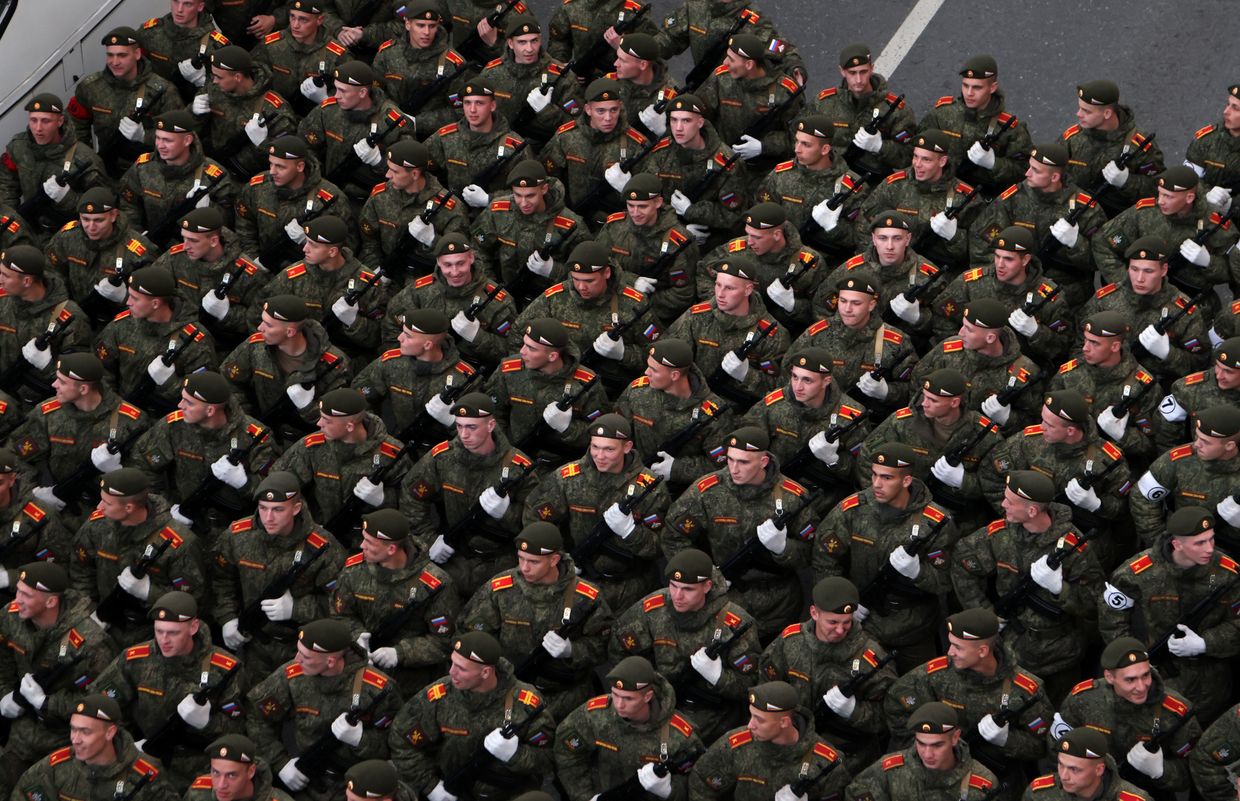

The UN Human Rights Monitoring Mission in Ukraine documented nearly 50% more civilian casualties in the first five months of 2025 compared to the same period in 2024.
In May alone, at least 183 civilians were killed and 836 injured across Ukraine, according to the UN Human Rights Monitoring Mission in Ukraine.
The data shows that attacks using long-range missiles and loitering munitions caused the most widespread harm across the country. Near frontline areas, short-range drones equipped with high-resolution cameras for precision targeting produced the highest civilian casualty rates.
“This year has been devastating for civilians across Ukraine, with significantly more deaths and injuries than during the same period in 2024,” stated Danielle Bell, Head of the UN Human Rights Monitoring Mission in Ukraine.
Bell described the combination of intensified long-range attacks and frequent short-range drone strikes along the frontline as “a deadly combination for civilians.”
The attacks affected cities across the country, with Kharkiv experiencing particular impact, along with Kyiv, Odesa and other cities located far from active frontlines.
Bell characterized the sustained nature of the attacks as particularly harmful to civilian populations.
“Hours-long nightly attacks with hundreds of weapons sow fear among families who spend their nights in bomb shelters, listening to the sounds of drones flying overhead,” she said. “At this pace and scale, further loss of civilian life is not just possible—it is inevitable.”

Overnight on 12 June, Russia again targeted Ukraine with long-range explosive drones. Although the number of drones dropped significantly—from over 400 in recent days to 63 last night—the attack still caused damage to civilian infrastructure and injured civilians.
The Ukrainian Air Force reported that Russia launched the 63 drones—including Shahed-type explosive drones and decoy UAVs—against Ukraine from directions including Russia’s Kursk, Oryol, Millerovo, Primorsko-Akhtarsk, and the Russian-occupied Chauda in Ukraine’s Crimea. The report says 49 drones were neutralized, with 28 shot down and 21 suppressed or lost via electronic warfare systems. Despite these defenses, drones hit at least seven locations, with debris falling in four others, according to the Air Force.
The Air Force’s data suggest that 14 Russian drones may have reached their intended targets.
In Kharkiv, Russian drones hit multiple areas, including a high-rise residential building and a nearby fitness club in the Saltiivskyi district, as reported by Suspilne and confirmed by Mayor Ihor Terekhov.
The 24-story building suffered damage, with three vehicles catching fire due to drone debris crash.
Local resident Volodymyr told Suspilne,
“The house shook, plaster fell from the ceiling, and my windows and balconies were blown out.”
Drone strikes also targeted Shevchenkivskyi and Slobidskyi districts of Kharkiv city.
Three civilians killed and nine children wounded as Russia hits residential areas in Kharkiv
According to Kharkiv Oblast Head Oleh Syniehubov, 16 people were injured in the region over the past 24 hours, including four children aged 2, 12, 16, and 17.
Weapons used included two unguided air rockets, six KAB guided bombs, and over 31 Shaheds, and five drones of other types, according to Syniehubov.
The oblast head also reported that rescuers have recovered the bodies of the fourth and fifth victims from under the rubble of a civilian enterprise in Kharkiv’s Kyivskyi District following Russia’s 7 June attack, with search and rescue operations still ongoing.
Body recovered in Kharkiv after Russia’s 7 June attack, five still missing
In Odesa Oblast, drones hit the Izmail district and damaged several multi-story residential buildings and a reed-processing enterprise in the Vylkove community. No casualties were reported, but civilian infrastructure was affected, according to Oblast Head Oleh Kiper.

Meanwhile, Donetsk Oblast Administration reported two civilians killed in Raiiske and Toretske and six others wounded over the past 24 hours. The report did not specify whether Russian drone strikes or artillery shelling caused the casualties.

The death toll of a Russian attack on the northeastern city of Kharkiv on June 7 has risen to five, as two more bodies were found in the rubble, Governor Oleh Syniehubov said on June 12.
The State Emergency Service reported the discovery of the fourth victim earlier in the day, adding that search and rescue operations are ongoing as more people may be under the rubble.
Russia attacked Kharkiv with drones, missiles, and KAB bombs overnight on June 7, damaging industrial buildings in the Kyivskyi district, causing structural collapses and large-scale fires. Authorities initially reported three people killed and 19 injured in the attack.
Later the same day, Russia again attacked the city with KAB bombs, killing two more people and injuring 18.
Recent weeks saw Moscow's forces intensify attacks against Kharkiv, Ukraine's second-largest city that lies a little over 20 kilometers (around 15 miles) south of the Russian border. A Russian drone attack against the city overnight on June 12 injured at least 15 people, including children.
The strikes take place as Kyiv warns of Russia's mounting ground assaults along Ukraine's northeastern border.
 The Kyiv IndependentMartin Fornusek
The Kyiv IndependentMartin Fornusek
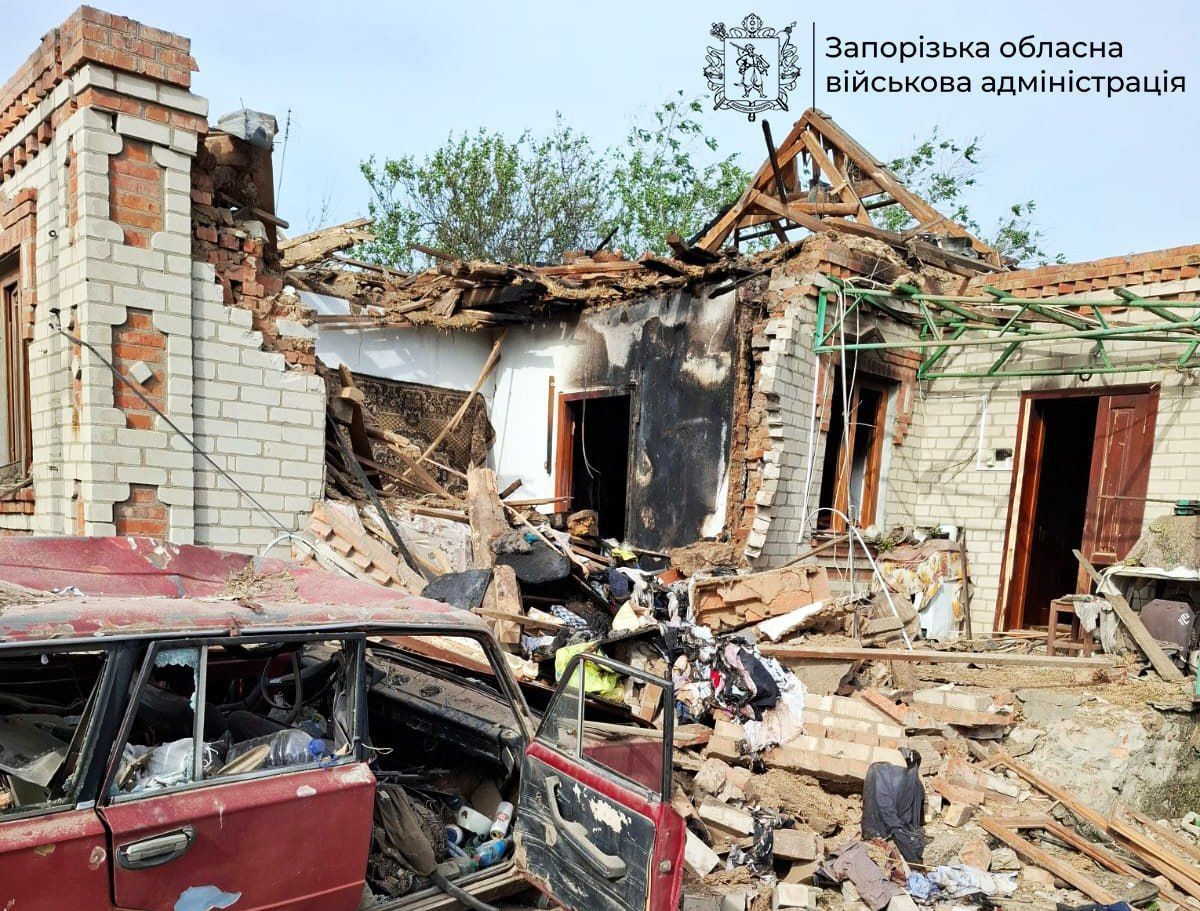
At least three civilians were killed and 37 injured across Ukraine in Russian attacks over the past day, regional authorities reported on June 12.
According to the Ukrainian Air Force, Russian forces launched 63 drones, including Shaheds and other unmanned aerial systems, from multiple directions, including Kursk, Orel, Millerovo, and occupied Crimea.
The Ukrainian air defense reportedly shot down 28 drones, while 21 were intercepted by electronic warfare or disappeared from radars.
In Kharkiv Oblast, 16 people, including four children, were injured in attacks on the city of Kharkiv and surrounding communities, Governor Oleh Syniehubov said. The region was hit by various types of drones, missiles, and glide bombs, damaging residential buildings, schools, and other civilian infrastructure sites.
In Donetsk Oblast, two civilians were killed and six others injured in Russian strikes on Raiske and Toretsk, according to Governor Vadym Filashkin.
In Sumy Oblast, one person was injured when a Russian first-person-view (FPV) drone struck his car in the Sumy district, the regional administration said. More than 100 attacks were recorded across 37 settlements, damaging houses and prompting the evacuation of 80 residents from border communities.
In Zaporizhzhia Oblast, two people were injured in Malokaterynivka during a wave of nearly 500 attacks on 16 towns and villages, Governor Ivan Fedorov said. Russian forces reportedly used drones, air strikes, artillery, and multiple-launch rocket systems (MLRS) to target civilian areas.
In Kherson Oblast, 12 people, including one child, were injured, and one person in the village of Sadove was killed in an artillery strike, Governor Oleksandr Prokudin said. Russian forces attacked dozens of towns and villages, damaging residential buildings, infrastructure, and a national park.
 The Kyiv IndependentOlena Goncharova
The Kyiv IndependentOlena Goncharova
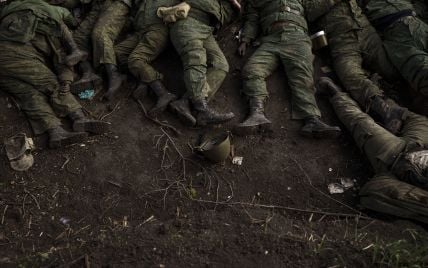
On 12 June 2025, the General Staff of the Armed Forces of Ukraine announced that Russian military personnel losses since 24 February 2022 have reached 1,000,340, coinciding with Russia’s national holiday, so-called Russia Day.
The General Staff reported that Ukraine’s Defense Forces eliminated 1,140 Russian soldiers in the past 24 hours, pushing the total number of Russian military losses since the start of the full-scale invasion past one million.
Previously, the Ukrainian officials clarified that the General Staff’s figures refer specifically to Russian soldiers killed, whereas foreign sources often interpret these numbers as the combined total of those killed and wounded in action.
The announcement was made public through the General Staff’s official Facebook page. Notably, the seven-digit figure was reached on 12 June, a day celebrated by the Russian state as its national holiday.
Putin won’t accept peace unless Russian empire is restored, says US ex-defense secretary Gates
Russian equipment and weapon losses reported as of 12 June 2025:
The military provided a breakdown of cumulative losses by year:
More than 628,000 of these deaths occurred in just the last 18 months, according to the GenStaff.
The General Staff identified several of the deadliest days of the war:
These dates reflect concentrated combat or high-impact Ukrainian counterstrikes during key offensives.
On 11 June 2025, there were 220 combat clashes, according to the report. That same day, Russian forces launched two missile attacks and 86 airstrikes, dropped 136 guided bombs, used 3,744 kamikaze drones, and shelled Ukrainian positions and settlements 6,064 times.
In response, Ukraine’s Defense Forces conducted strikes on:

© Hostages' Families Forum, via Associated Press

Three people died and 60 others were wounded, including nine children, when Russian forces conducted a large-scale drone assault on Ukrainian territory during the night of 11 June.
Russian forces deployed 85 Iranian-designed Shahed type drones along with decoy drones and one missile in the overnight attack, according to the Air Force of Ukraine. Ukrainian defense forces successfully intercepted 49 of the aerial targets across multiple regions. The primary targets were Kharkiv, Donetsk, and Odesa oblasts.
Of the 49 neutralized targets, 40 were destroyed by fire weapons while nine were lost or jammed through electronic warfare measures. The attack resulted in confirmed hits at 14 locations, with debris from downed aircraft falling at two additional sites.
Ukraine’s second-largest city of Kharkiv suffered the most severe impact from the attack. Kharkiv Mayor Ihor Terekhov reported that enemy forces struck with 17 Shahed-type drones in the midnight, targeting the Slobidskyi and Osnovianskyi districts and killing two civilians.
“There were direct hits on apartment buildings, private homes, playgrounds, enterprises, and public transport,” Terekhov stated, describing damage to burning apartments, destroyed roofs, and broken windows.




The attack also damaged trolleybuses, contact networks, and utility infrastructure. Terekhov emphasized that the targeted locations were “ordinary objects of peaceful life” that should not become military targets.
Russia killed three people in Kharkiv and injured 60 others, including nine children.
— Euromaidan Press (@EuromaidanPress) June 11, 2025
Russian drones struck residential buildings, playgrounds, enterprises and public transport in two city districts.State Emergency Service pic.twitter.com/nHn95qJgzh
Kharkiv Regional Administration Head Oleh Syniehubov provided updated casualty figures, confirming that the death toll rose to three after a 65-year-old man died in intensive care from severe burns.
The regional official reported that 60 people were injured in Kharkiv city alone, with nine children aged 2 to 15 among the wounded.
Beyond the drone strikes, Russian forces also deployed various weapons systems against Kharkiv Oblast, including 13 guided aerial bombs, two Molniya-type drones, and two FPV drones.





Odesa Oblast came under assault during the same timeframe, according to the State Emergency Service. The attack caused damage to summer houses, outbuildings, passenger vehicles, and civilian watercraft, with fires breaking out at several locations.
Emergency responders quickly extinguished the blazes, and officials reported no casualties in the region.


In Sumy Oblast, a Russian drone struck the Lebedyn community, igniting a fire in a non-residential building used to store agricultural equipment, the State Emergency Service reported. Firefighters successfully extinguished the blaze, and preliminary reports indicated no injuries occurred.
Utility and emergency services across all affected regions continued working to restore damaged infrastructure and assist victims, according to local officials.



At least four people were killed and 73 injured over the past day as Russian forces launched drone and missile attacks across multiple regions of Ukraine, authorities said on June 11.
Ukraine's Air Force reported that Russia deployed 85 attack drones, including Shahed-type unmanned aerial vehicles (UAVs) and decoy drones, along with one Iskander-M ballistic missile launched from Russia's Kursk Oblast.
The main targets were the Kharkiv, Donetsk, and Odesa oblasts. Ukrainian air defenses reportedly shot down 40 drones overnight, while nine drones disappeared from radars or were intercepted by electronic warfare.
In Kharkiv Oblast, three people were killed and 60 injured, including nine children, following drone strikes on residential buildings in Kharkiv city, Governor Oleh Syniehubov said. Five people were injured elsewhere in the region.
In Kherson Oblast, five people were injured in Russian attacks, Governor Oleksandr Prokudin said. A high-rise building and 10 houses were damaged.
In Odesa Oblast, Russian drones struck coastal communities overnight, damaging summer houses, farm buildings, cars, and civilian boats, the State Emergency Service reported. Fires broke out but were reportedly extinguished. No casualties were reported.
In Donetsk Oblast, one civilian was killed in the town of Raiske, and another person was injured, Governor Vadym Filashkin said.
In Zaporizhzhia Oblast, Russian forces carried out 419 attacks on 14 settlements, Governor Ivan Fedorov said. The attack included seven air strikes, 220 drone attacks, and 189 artillery strikes. A civilian vehicle was hit by a drone in Malokaterynivka, injuring two people.
In Dnipropetrovsk Oblast, Russia targeted the Synelnykove and Nikopol districts, Governor Serhii Lysak said. A drone strike sparked a fire at a private enterprise in the Vasylkivska community, destroying a building and farming equipment. In the Nikopol district, artillery and kamikaze drones struck multiple communities, damaging houses and vehicles. No injuries were reported.
In Sumy Oblast, Russian forces launched 14 attacks on border communities, local officials reported. The strikes included mortar and artillery shelling, as well as drone activity. No casualties were reported, but several houses and power lines sustained damage.
 The Kyiv IndependentDmytro Basmat
The Kyiv IndependentDmytro Basmat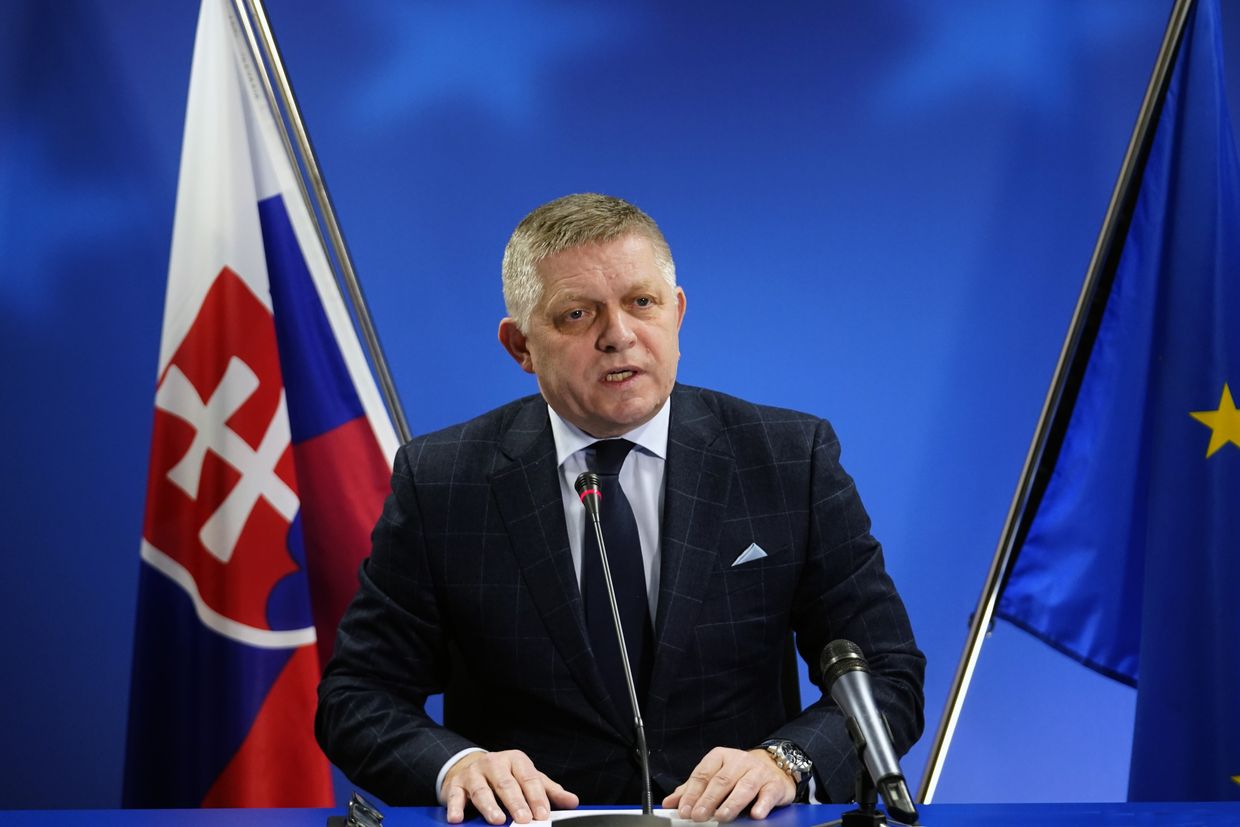
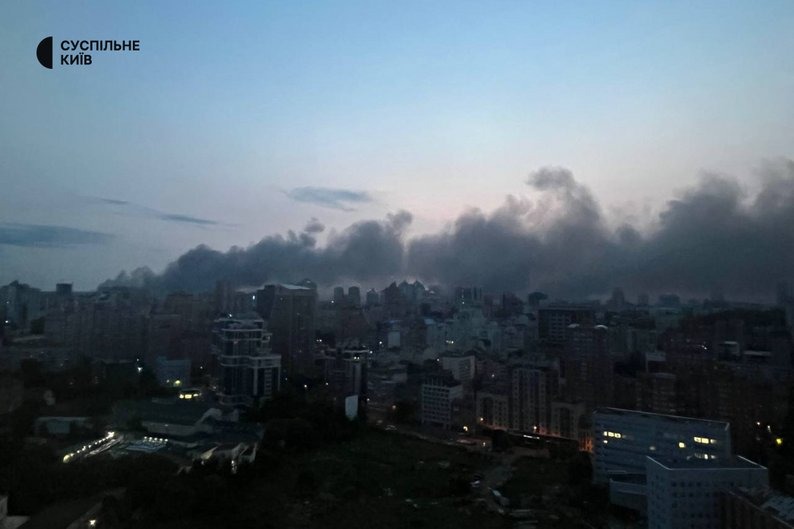
Overnight on 10 June, Russia launched one of the war’s largest air attacks on the Ukrainian capital, Kyiv, also targeting Odesa, killing at least three people and injuring over a dozen, according to local authorities.
The Ukrainian Air Force confirmed that Russia launched 322 aerial weapons, including 315 Shahed drones and decoy UAVs, two North Korean-supplied KN-23 ballistic missiles from Voronezh Oblast, and five Iskander-K cruise missiles from Kursk Oblast.
Of these, Ukraine’s air defenses reportedly destroyed 284 targets: 213 Shahed drones, two ballistic missiles, and five cruise missiles, while 64 drones were jammed or lost from radar tracking.
The Air Force’s data suggest that at least 38 Russian drones may have hit their intended targets.
11 locations were hit, while drone debris crashed in 16 locations, according to the report.

Kyiv was the primary target of Moscow’s air assault last night. Russia targeted Kyiv with an intense wave of aerial attacks overnight on 10 June, causing major fires and destruction across eight city districts.
The attack killed a woman in the Obolonskyi District and injured four men of various ages. Two remain hospitalized while two were treated on site, according to Kyiv’s mayor Vitali Klitschko and the Kyiv City Military Administration (KMVA).




Several residential buildings, businesses, a stadium, and infrastructure were damaged in the Darnytskyi, Obolonskyi, Holosiivskyi, Desnianskyi, Shevchenkivskyi, Podilskyi, Solomianskyi, and Dniprovskyi districts. In Obolonskyi, a helicopter was deployed to extinguish a major fire.
Debris damaged homes, cars, a sanatorium, and even a former consulate building of a European country, which caught fire. Though long out of use, the building was occupied by a guard and several animals—all survived.
In Kyiv, the Emergency Service deployed the Ka-32 firefighting helicopter to combat the fires.
— Euromaidan Press (@EuromaidanPress) June 10, 2025Suspilne, Zhyttia Obolon Kyiv pic.twitter.com/Fg2BUoftSJ
In Shevchenkivskyi, the 11th-century St. Sophia’s Cathedral, a UNESCO World Heritage Site, sustained damage to its main apse cornice due to the blast wave. Culture Minister Mykola Tochytskyi confirmed the damage.
Police reported that a drone detonated near a patrol vehicle responding to the attack, injuring one officer with shrapnel. The incident is being investigated as part of a broader criminal case into the attack.
Russia just gave North Korea the blueprint for Iran’s long-range killer drones, Ukraine’s spy chief says
The southern Ukrainian city of Odesa on the Black Sea coast also came under heavy drone attack. Odesa Oblast Military Administration (OVA) head Oleh Kiper reported two civilian deaths and nine injuries. One of those killed by Russia was a 59-year-old man. Among the injured were five women and three men, while another woman suffered an acute stress reaction. Four of the wounded were hospitalized with moderate injuries.
Odesa regional authorities say the Russian drone strikes killed a man, 59, and injured at least four other people.
— Euromaidan Press (@EuromaidanPress) June 10, 2025TG/Oleh Kiper pic.twitter.com/XNjtuNiV4Z
A maternity ward, private medical clinic, sports facility, zoo, and a central railway station building were damaged. Though no casualties were reported in the maternity hospital strike, all staff and patients were evacuated in time. In total, over 10 drones were used in the attack on Odesa.

An administrative building of the emergency medical services station was completely destroyed, with ambulances also damaged. Fires broke out across multiple locations in the city center. City authorities confirmed that residential buildings were hit, with initial reports of at least one woman killed and three hospitalized.
Elsewhere, Cherkasy Oblast’s chief Ihor Taburets confirmed that local air defense shot down 15 Russian drones overnight. No injuries or infrastructure damage were reported.

Rescue workers discovered a body on 10 June under the debris of a Kharkiv enterprise destroyed in Russia’s deadly overnight attack on 7 June. The search for five more missing workers continues.
Kharkiv Mayor Ihor Terekhov announced the discovery via Telegram on 10 June.
“During rescue work at the enterprise shelled on 7 June, a body was found. The process of its recovery is ongoing,” Terekhov wrote.
He added that rescue operations are being conducted around the clock, and according to available data, up to five individuals may still be trapped under the rubble.
Kharkiv endures most extensive attack since full-scale invasion began. Three civilians killed, dozens injured
The enterprise, located in Kharkiv’s Kyivskyi District, was hit during what Terekhov described as the “most powerful attack” on the city since the start of Russia’s full-scale invasion.
The assault began at approximately 03:00 a.m. on 7 June and included over 40 explosions. Russian forces used more than 50 Shahed explosive drones, four guided bombs (KABs), and one missile, according to Kharkiv Oblast Prosecutor’s Office head Spartak Borysenko.
A large fire erupted at the site, and initial reports said six workers might be blocked under the rubble. Five of them—three women and two men—were confirmed injured.
Injured teen dies week after Russian attack on Sumy
The overnight Russian assault on Kharkiv killed three civilians and injured 21 others, including a one-and-a-half-month-old infant and a 14-year-old girl. Later that evening, Russian forces attacked again with guided bombs, one of which hit the children’s railway, killing two and injuring over 40 people.
Russian missile killed young couple planning marriage. They lived on 8th floor —their bodies found in basement after collapse

A 17-year-old boy has died in hospital from injuries sustained during the Russian rocket artillery strike on the city of Sumy on 3 June, raising the total death toll to six. “Doctors fought for his life for nearly a week,” local authorities reported on 10 June.
On 3 June, Russian forces shelled central Sumy city in northeastern Ukraine, reportedly using the Tornado-S multiple launch rocket systems. According to President Volodymyr Zelenskyy, the strike was a deliberate attack on civilian areas.
“Russians savagely hit Sumy. Just the city, ordinary streets – with rocket artillery. A completely deliberate strike on civilians. A rescue operation is underway now,” Zelenskyy said back then.
The President also highlighted that at least one rocket did not detonate. The unexploded munition penetrated the wall of a ninth-floor apartment.
Russia kills civilians in central Sumy with Tornado-S cluster munitions. “Hypersonic” Kinzhal hits near Mykolaiv (updated)
On the evening of 3 June, officials reported four people killed and 28 injured in the attack. Among the wounded were three children.
On 4 June, the death toll rose to five after an 86-year-old woman died in hospital from injuries sustained during the shelling.
Now, the latest victim, the 17-year-old boy, passed away nearly a week later despite intensive efforts by medical personnel.
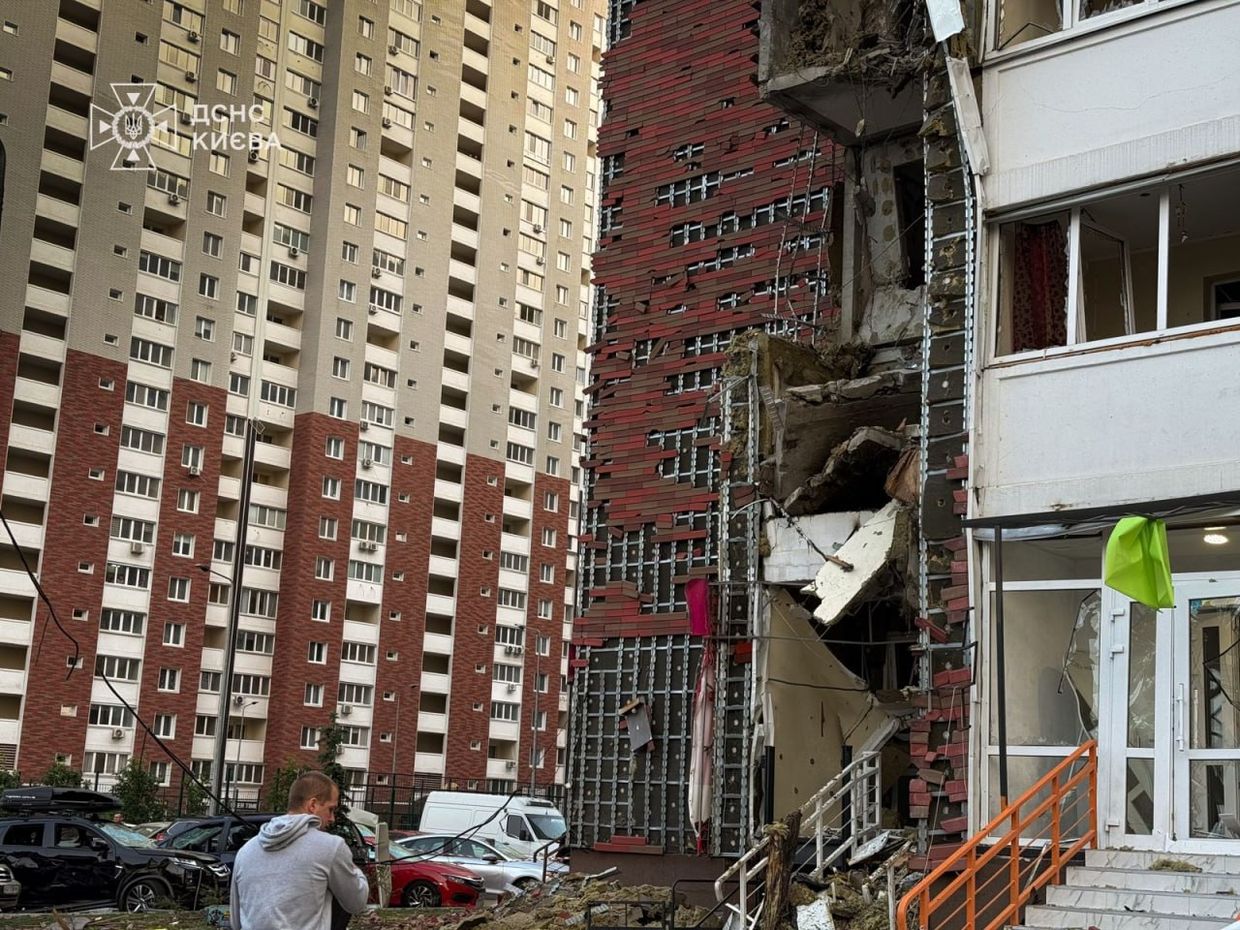
Russian attacks across Ukrainian regions killed at least seven civilians and injured at least 34 over the past day, regional authorities reported on June 10.
Russia launched 315 Shahed-type attack drones and decoys against Ukraine overnight, as well as two North Korean KN-23 ballistic missiles and five Iskander-K cruise missiles, primarily targeting Kyiv, the Air Force reported.
Ukrainian air defenses shot down all seven missiles and 213 attack drones. According to the statement, 64 drones disappeared from radars or were intercepted by electronic warfare systems.
At least four people were injured during the overnight attack on Kyiv, and fires broke out in multiple districts of the capital, Mayor Vitali Klitschko reported. The strike marked one of the heaviest attacks against Ukraine's capital city throughout the full-scale war.
A drone attack on Odesa killed two men and injured eight other people, four of whom were hospitalized and are in moderate condition, Governor Oleh Kiper said. Medical facilities, including a maternity hospital, were damaged in the southern city.
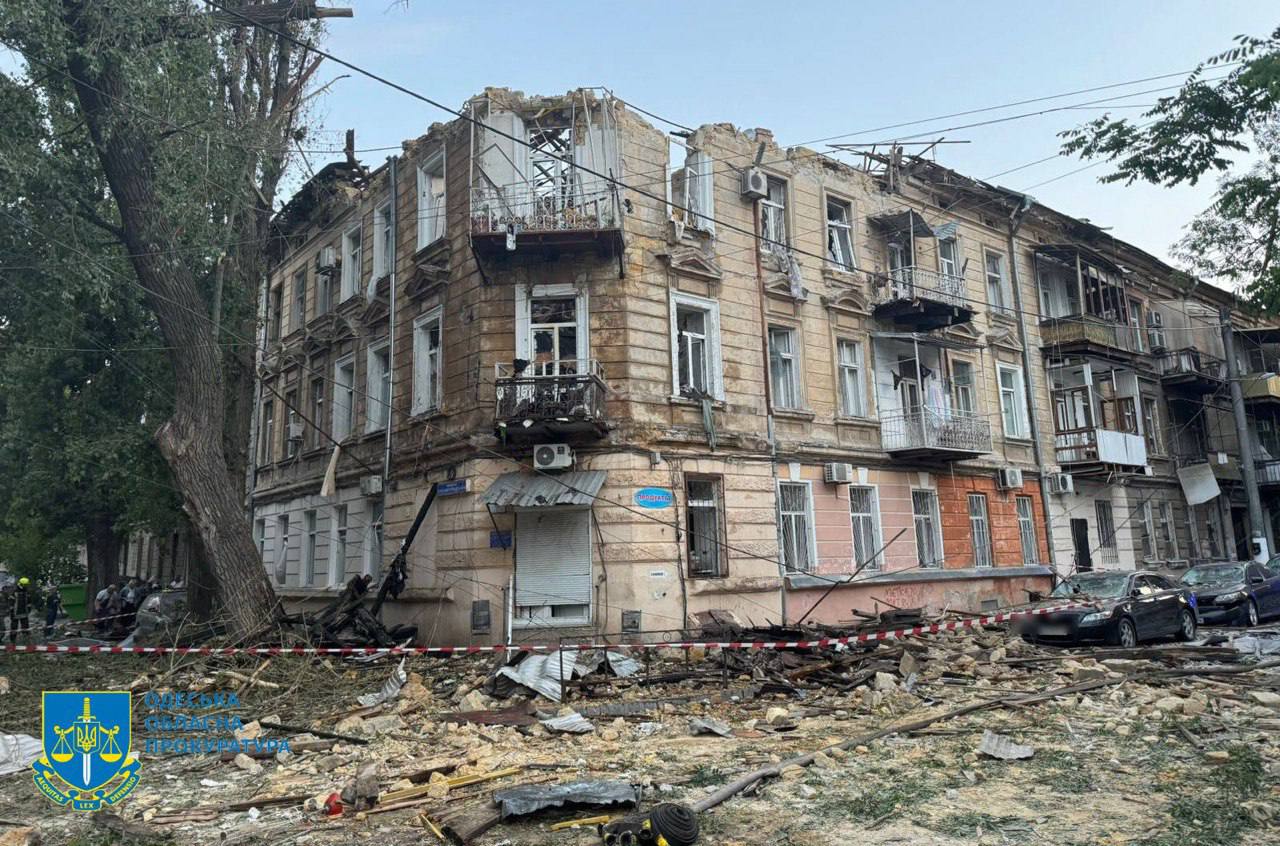


In Dnipropetrovsk Oblast, Russian drone and artillery attacks against the Nikopol district killed one person and injured another on June 9, and wounded two other men overnight on June 10, Governor Serhii Lysak reported.
In the Synelnykove district of the same region, Russian drone attacks set fire to a cultural center, "effectively destroying" it, the governor added.
Russian attacks across Donetsk Oblast killed three people in Yarova, Pokrovsk, and Myrnohrad, and injured eight others, Governor Vadym Filashkin reported.
Russia attacked eight settlements in Kharkiv Oblast with missiles, bombs, and drones, injuring a man in Kupiansk and another in Derhachi, according to Governor Oleh Syniehubov.
In Kherson Oblast, one person was killed and eight injured during Russian attacks, Governor Oleksandr Prokudin reported. Five high-rise buildings and 15 houses were damaged.
An elderly woman was injured during a Russian attack on Zaporizhzhia, according to Governor Ivan Fedorov.
 The Kyiv IndependentOlena Goncharova
The Kyiv IndependentOlena Goncharova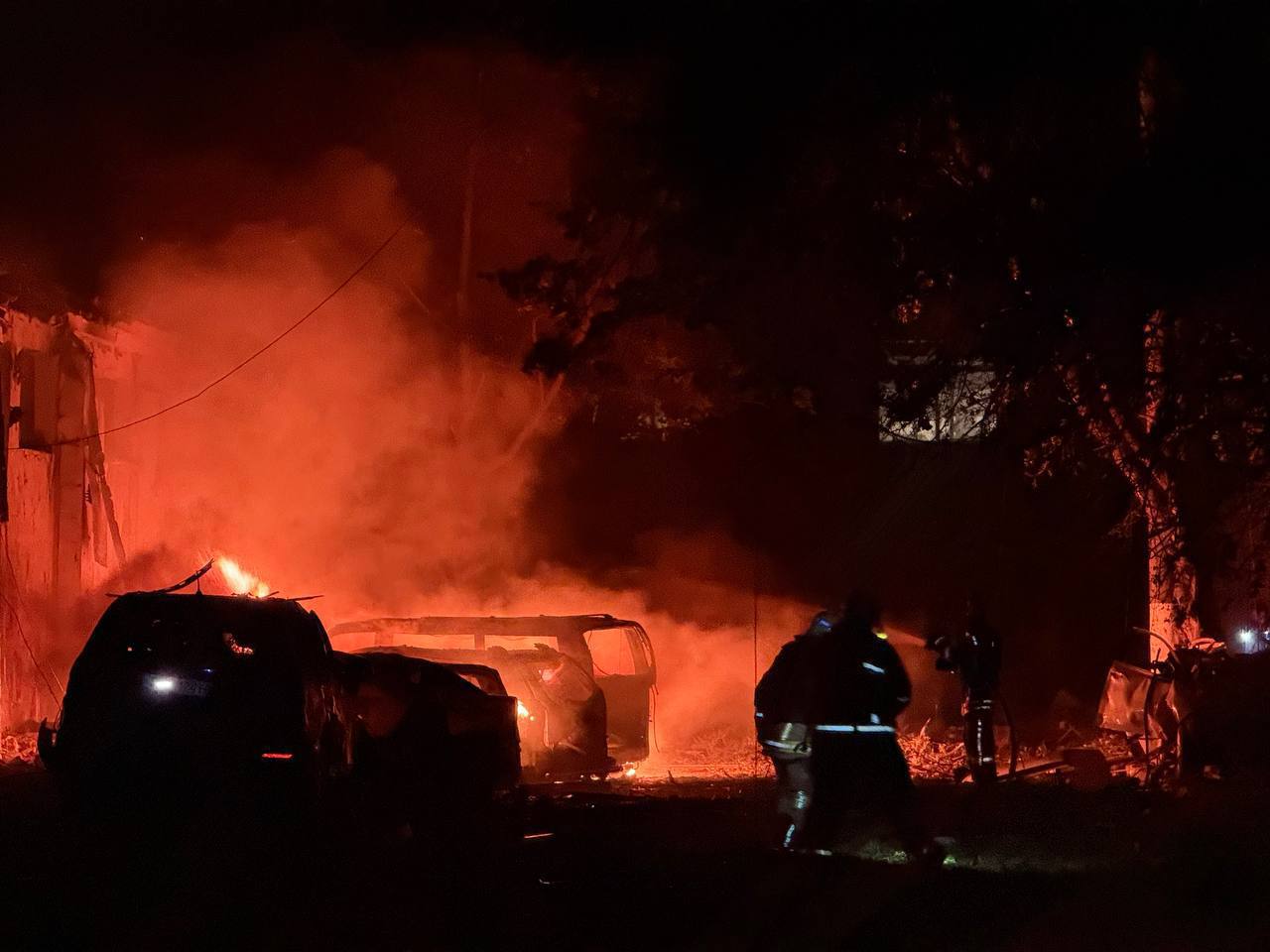

Ukraine’s Air Force reported that Russia launched 49 explosive Shahed drones, decoy drones, a cruise missile, and two guided missiles overnight on 8 June, with Ukrainian defenses neutralizing 40 of the drones.
According to the Air Force, the attack was countered by air defense missile units, mobile fire groups, and electronic warfare teams from both the Air Force and broader Defense Forces.
As of 09:00, 40 Shahed drones and other types of unmanned aerial vehicles were neutralized over the east, south, north, and center of Ukraine. Among these, 22 were destroyed by direct fire, while another 18 were either jammed or lost on radars with no further consequences.
Reuters: US expects another multi-pronged Russian strike after Ukraine’s Spiderweb drone attack
The Air Force’s data suggest that all three missiles and at least nine drones may have reached their intended targets.
The Air Force identified Kharkiv Oblast and Donetsk Oblast as the main directions of the overnight Russian assault. Strikes were recorded at five locations.
While no direct damage or casualties from the latest attack were cited, regional reports provided updates on the previous day’s strikes. In Kharkiv Oblast, Head of the Oblast Military Administration Oleh Syniehubov stated that the city of Kharkiv and nine other settlements came under heavy Russian fire during 7 June.
According to Syniehubov, the earlier attack left three civilians dead and 23 injured. Two of the fatalities occurred in Kharkiv, where 18 people were wounded. In the village of Staryi Saltiv, two women aged 46 and 53 and a 30-year-old man were injured. In Kupiansk, a 44-year-old man sustained injuries. In Kozacha Lopan, a 60-year-old man was killed, and another man aged 47 was injured.
Kharkiv endures most extensive attack since full-scale invasion began. Three civilians killed, dozens injured
Syniehubov detailed that Russian forces had used a wide variety of weapons in Kharkiv Oblast during the day, including one Kh-59 missile, nine guided aerial bombs (KABs), 64 Shahed drones, three “Geran-2” drones (the Iranian-designed Shahed-136 that Syniehubov, for some reason, refers to by its Russian designation), one Lancet drone, and two Molniya drones. In the city of Kharkiv itself, four KABs struck the Shevchenkivskyi and Kyivskyi districts.
Donetsk Oblast Head Vadym Filashkin reported that Russian attacks on 7 June killed four civilians: two in Yablunivka, one in Kostiantynivka, and one in Siversk. Another nine people in the oblast were injured.
Separately, in the frontline town of Prymorske in Zaporizhzhia Oblast, a Russian FPV drone targeted a detached house, as reported by Oblast Head Ivan Fedorov on 8 June. The attack resulted in a fire that completely destroyed the building and left a 63-year-old man with shrapnel wounds. He was hospitalized and is receiving medical care.

A young couple planning to marry died in their home when a Russian missile struck their apartment building in Lutsk, burying them under the rubble.
Russian forces deployed six missiles and 15 Shahed drones against the city of Lutsk in western Ukraine. The strikes resulted in 30 people sustaining injuries, while the targeted eight-story residential building experienced partial destruction.
This is Mykola and Ivanna — a young Ukrainian couple who planned to get married. But a Russian missile took their lives.
— Euromaidan Press (@EuromaidanPress) June 7, 2025
Russian officials described the massive assault on 6 June as retaliation for a recent surprise Spiderweb drone operation, which, however, targeted military… pic.twitter.com/xqDhWJFXCj
Mykola and Ivanna lived on the eighth floor but were found dead in the basement after the structure collapsed suffering direct impact from the strike.
“Their car is parked next to the building, but they are not responding. We hoped for a miracle… But unfortunately, they were killed by Russian terrorists,” said Roman Kravchuk, a deputy on the Lutsk City Council.
Emergency responders found Mykola’s body on 6 June, while Ivanna’s remains were located at 4:15 a.m. the following day.
The large-scale attack on 6 June targeted also Kyiv, Ternopil, Lviv, and several other Ukrainian cities with a massive barrage of over 400 drones and more than 40 missiles, including cruise and ballistic types. The assault resulted in six people killed and around 80 injured alongside widespread destruction of residential buildings, infrastructure, and energy facilities.
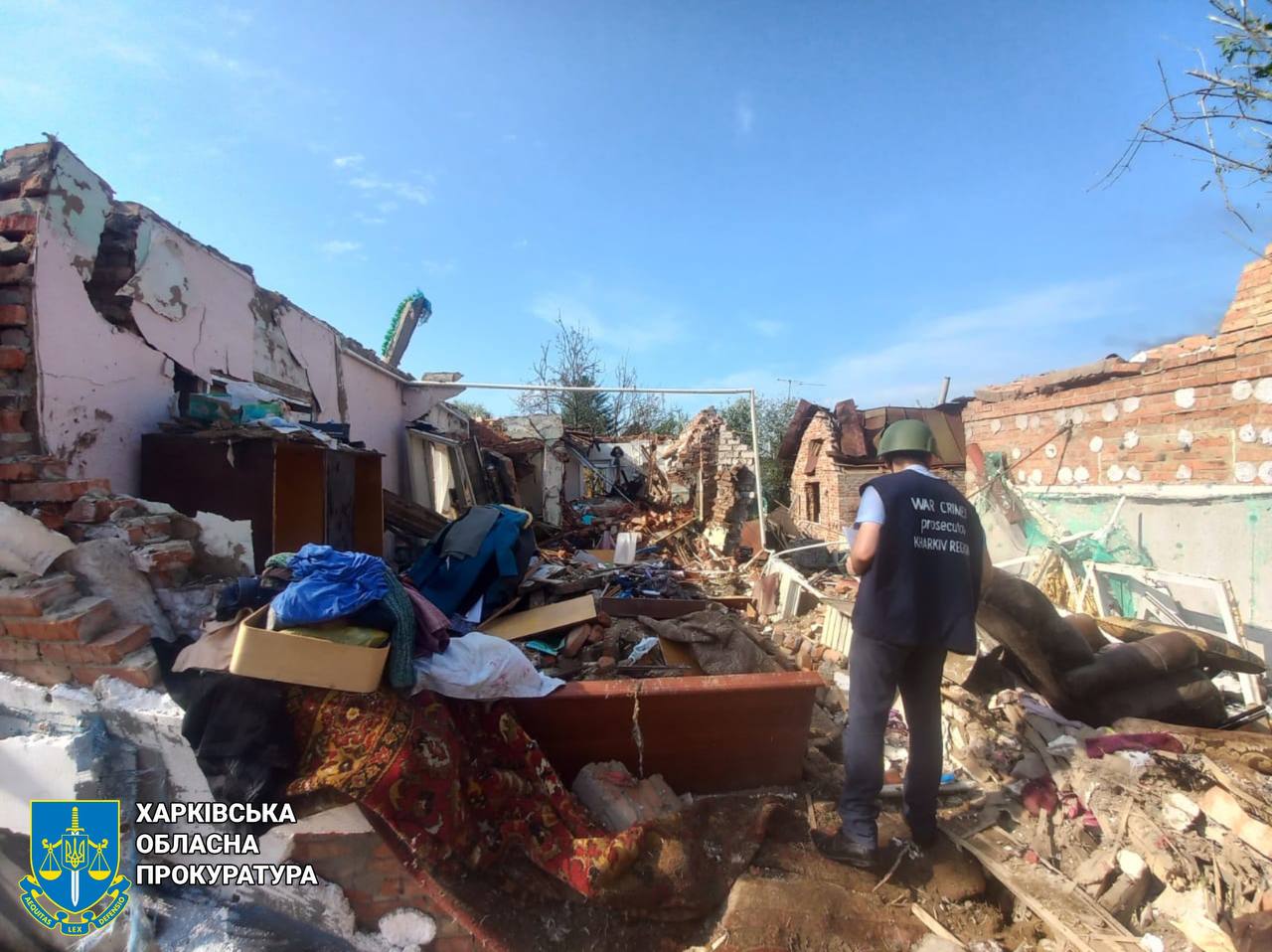
Six people are most likely trapped under the rubble of an industrial facility in Kharkiv that was hit by a Russian attack earlier in the day, the Kharkiv Oblast Prosecutor's Office reported on June 7.
The rescue operation was ongoing as of 1:45 p.m. on June 7, reads the report.
Contact with those trapped has been lost, the prosecutors added.
Russian forces attacked Kharkiv with drones, missiles, and KAB guided bombs overnight on June 7, killing at least three people and injuring 22, according to Governor Oleh Syniehubov.
Syniehubov said that drones had struck civilian targets across the city, including a 9-story residential building, a local enterprise, a home, and other facilities.
Two children were injured in the attack, including a 1-month-old baby, Syniehubov said.
At least 40 explosions were recorded across the city amid the attack, local media reported. Mayor Ihor Terekhov reported that the Osnovyanskyi and Kyiv districts of the city suffered strikes.
According to Terekhov, 48 Shahed drones, two missiles, and four guided aerial bombs were launched toward the city.
Located along the front line, Kharkiv Oblast in Ukraine's northeast is a regular target of Russian missile, drone, and glide bomb attacks from across the border.
 The Kyiv IndependentThe Kyiv Independent news desk
The Kyiv IndependentThe Kyiv Independent news desk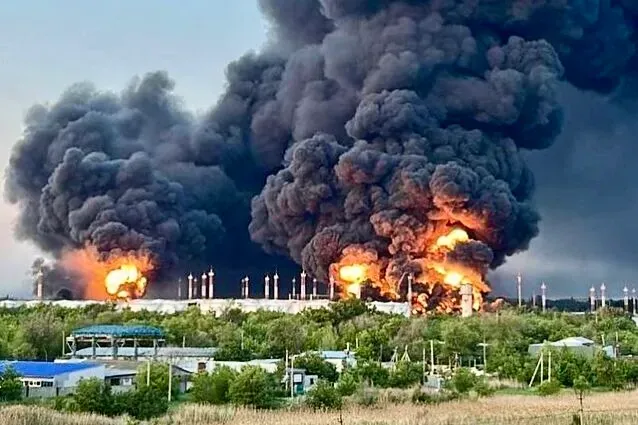

© Sergey Bobok/Agence France-Presse — Getty Images

© Abdel Kareem Hana/Associated Press

© The New York Times
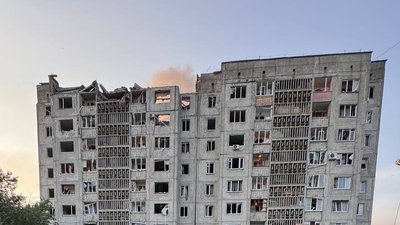
In the early hours of 6 June, Russia conducted one of the largest air attacks since the start of its full-scale invasion, targeting Kyiv, Ternopil, Lutsk, Lviv, and several other cities using a combination of missiles and drones. The Russian assault resulted in civilian casualties — with four people known to have been killed and 25 injured — along with widespread damage to infrastructure and multiple fires.
At the time of reporting, the attack was still ongoing, with several Russian drones remaining airborne over multiple regions.
Here’s what we know so far.
So far, there is no official count of the missiles and drones used in the attack, but live reporting from Ukrainian monitoring channels indicated that Russia launched over 100 missiles, along with a significantly higher number of drones.
The Ukrainian air monitoring channel Monitor summarized that the Russian assault involved Kh-101 cruise missiles launched by Tu-95MS bombers from Volgograd Oblast, Kalibr missiles fired by the Black Sea fleet, and Iskander-M ballistic missiles launched from Kursk and Voronezh Oblasts. The attack also included Shahed drones and other types of UAVs.
The assault affected Kyiv, Kyiv Oblast, Lviv Oblast, Lutsk, Ternopil and Ternopil Oblast, Rivne Oblast, Khmelnytskyi Oblast, Chernihiv, Kharkiv, Poltava Oblast, and Bilhorod-Dnistrovskyi district of Odesa Oblast. Energy infrastructure, residential areas, and civilian sites were hit, as confirmed by local authorities and military administrations.
Monitor stated the missile phase of the assault lasted from 03:10 to 04:40, while drone waves began at 20:10 and continued for over 10 hours.
Ukrainian airspace monitoring channels reported that Russia targeted the Ukrainian capital with cruise and ballistic missiles, and Shahed explosive drones. The mayor of Kyiv, Vitaliy Klitschko, confirmed that as of 6:00, one person was killed and 20 others were injured, 16 of whom were hospitalized. Strikes hit multiple districts, including Solomianskyi, where a school and residential buildings were damaged.
Drone debris caused fires in Darnytskyi, where vehicles were destroyed, and in Holosiivskyi, where building structures were reportedly damaged. Fires also broke out in Shevchenkivskyi and Sviatoshynskyi. Debris fell in Desnianskyi and other parts of the city. Metro lines between “Darnytsia” and “Livoberezhna” were damaged. Some areas on the city’s left bank experienced temporary power outages.
“They were working under fire to help people. Another nine emergency workers were wounded. Some are in serious condition — doctors are fighting for their lives,” Klymenko wrote on Telegram.
Ternopil mayor Serhii Nadal reported that industrial and infrastructure targets in the city were struck. Part of the city was left without electricity and water pressure dropped. Emergency services were working at the scene.
Head of the Oblast Military Administration, Viacheslav Nehoda, described it as “the most massive air attack on our oblast,” noting multiple strikes and ongoing firefighting efforts. Explosions were first reported during an air raid starting at 03:16.
In Lutsk, mayor Ihor Polishchuk confirmed five people were injured in the strikes. According to him, the Russians targeted the city with 15 drones and five missiles. It is the largest attack on the city since the beginning of Russia’s full-scale invasion.
A residential building suffered partial destruction and windows were shattered in multiple buildings. Commercial facilities and private vehicles were also damaged. The Oblast Military Administration added that people were evacuated and received medical help, noting that air defenses “destroyed a lot of [aerial] targets.”
Russia kills Ukrainian baby and seven more people as Trump keeps pushing predictably doomed peace talks
Lviv mayor Andrii Sadovyi and regional head Maksym Kozytskyi confirmed that air defenses operated successfully and no Russian strikes reached Lviv community infrastructure. Loud explosions were heard during the air raid, which started at 00:53 and ended at 05:01.
Chernihiv City Military Administration head Dmytro Bryzhynskyi reported that a Shahed drone exploded near a high-rise building on the city’s outskirts. No casualties or damage were mentioned.
Explosions were reported by Suspilne correspondents in Khmelnytskyi during an air raid early in the morning. The Ukrainian Air Force noted that cruise missiles entered the oblast around 04:05.
Read the followup:
Russia launches 407 drones and 44 missiles against Ukraine in overnight assault, Air Force says

© Valentyn Ogirenko/Reuters

© Abdel Kareem Hana/Associated Press

Russian forces launched an overnight air assault on 5 June using over 100 drones and a ballistic missile against Ukraine, and continued ground and artillery attacks. Russian strikes killed at least eight civilians, including a baby, and injured dozens across Ukraine, according to local authorities.
This comes as US President Donald Trump continues to push for peace talks between Kyiv and Moscow—two previous rounds of which brought neither peace nor even a ceasefire. Russia, meanwhile, continues its nightly explosive drone attacks on Ukrainian cities while demanding Ukraine’s surrender. At the same time, new US sanctions against Russia have reportedly been stalled by the American president himself.
According to Ukraine’s Air Force, Russia used 103 Shahed-type drones and one Iskander-M ballistic missile in its latest assault from Russian territory and Crimea’s occupied zone. The main directions of attack included Chernihiv, Kharkiv, and Odesa oblasts. Air defenses neutralized 74 drones—28 shot down and 46 jammed or lost. Impacts from the airstrikes were confirmed in 16 locations across Ukraine.
The Air Force’s data suggest that the missile and at least 29 Russian drones may have reached their targets.
In Pryluky, Chernihiv Oblast, Russia struck with at least six Shahed drones, for some reason referred to by their Russian designation as “Geran” by Regional Military Administration head Vyacheslav Chaus.
Ukraine’s President Volodymyr Zelenskyy confirmed that the fatal strike destroyed the home of a rescuer, killing his wife, daughter, and grandson.
“This is already the 632nd child killed during the full-scale war,” Zelenskyy said.
Large fires broke out in residential areas. The State Emergency Service reported two detached houses, two garages, one outbuilding, and a car were destroyed.
Kharkiv’s Slobidskyi district was hit by seven Russian drones, with a total of 16 explosive drones targeting Kharkiv Oblast. Additionally, the region was targeted by an Iskander-M Russian missile, two Kh-35, and one more unidentified missile. Mayor Ihor Terekhov and Oblast head Oleh Syniehubov reported 19 injured, including a pregnant woman, a 93-year-old, and four children, aged 7, 9, and 13. Additionally, a 38-year-old man was injured in Izium, Kharkiv Oblast, after an explosion of an unidentified device.
Terekhov stated:
“This is not a strike on military targets. This is deliberate terror against residential areas and ordinary Kharkiv residents.”
Seven apartment buildings were damaged, with drones hitting 17th and 2nd floors directly. Fires erupted in apartments and vehicles.
Russia struck Bilhorod-Dnistrovskyi district in Odesa Oblast with drones, damaging a family medicine clinic, a children’s creativity center, and a lyceum school. Local authorities reported no casualties. Fires were extinguished by emergency services. Oblast head Oleh Kiper said law enforcement is documenting Russia’s actions as war crimes.
Sumy Oblast authorities confirmed injuries to two civilians over the past 24 hours: a 42-year-old man and a 13-year-old girl. Nearly 100 Russian strikes hit 35 towns and villages, including the use of more than 20 guided bombs and 30 VOG grenades dropped from drones.
Kherson Oblast authorities reported two killed and 10 injured over the past 24 hours. This morning, Russian forces bombed central Kherson with four KAB bombs, causing additional injuries to a 74-year-old, 68-year-old, and a 44-year-old man.
One apartment block’s entrance was destroyed, and nearby buildings damaged. The strike targeted the Kherson Oblast Administration building.
Four people trapped in a basement were rescued unharmed.
Earlier, a 66-year-old man suffered a blast injury in Bilozerka and will receive outpatient treatment.
In Zaporizhzhia Oblast, two were injured during 428 Russian strikes across 14 settlements, including Vasylivskyi district, local authorities reported.
In Nikopol, Dnipropetrovsk Oblast, a 71-year-old man was severely wounded by a Russian drone-dropped munition.
The Donetsk Oblast Military Administration reported an additional fatality and five more injuries from Russian attacks on 4 June.
President Zelenskyy condemned the Russian strikes as acts of terrorism:
“This is another massive attack by Russian terrorists who kill our people every night. We expect action from the US, Europe, and everyone who can help stop this.”
He called for further sanctions and international pressure, stating that peace can only come through force and determination.
Related:
You could close this page. Or you could join our community and help us produce more materials like this.
We keep our reporting open and accessible to everyone because we believe in the power of free information. This is why our small, cost-effective team depends on the support of readers like you to bring deliver timely news, quality analysis, and on-the-ground reports about Russia's war against Ukraine and Ukraine's struggle to build a democratic society.
A little bit goes a long way: for as little as the cost of one cup of coffee a month, you can help build bridges between Ukraine and the rest of the world, plus become a co-creator and vote for topics we should cover next. Become a patron or see other ways to support.

Russian forces launched a massive drone assault on Ukraine overnight on 4 June, deploying 95 strike drones and decoy aircraft across multiple oblasts.
Ukrainian air defenses destroyed 61 Russian drones, according to the Air Force Command.
The attack targeted Kharkiv, Odesa, Sumy Oblast, Dnipropetrovsk Oblast, and Donetsk Oblast. Russian aircraft struck seven locations across the country.
Russian forces attack Ukraine daily with various types of weapon. Russian leadership denies that its army deliberately targets civilian infrastructure during the full-scale war, killing civilians and destroying hospitals, schools, kindergartens, and energy and water supply facilities. Ukrainian authorities and international organizations classify these strikes as war crimes by the Russian Federation and emphasize their deliberate nature.
Kharkiv bore the brunt of the attack. Russian forces used nine Shahed drones and two missiles of undetermined type against the city, Kharkiv Mayor Ihor Terekhov said.
The attack lasted 90 minutes. Russian forces struck civilian infrastructure, enterprises, residential buildings, a car service station, and a park across seven locations in Novobavarian district.
According to the Situation Center, missile strikes occurred in the Novobavarian district at a civilian enterprise.
A 30-year-old man was injured in the attack, according to Kharkiv Oblast Governor Oleh Syniehubov.
The strikes damaged a civilian enterprise workshop and caused a major fire at another facility. A car service station burned down along with a private house, garage, and outbuilding. Seven nearby homes sustained damage.
Ground crews found an unexploded Shahed drone. The attack damaged electrical networks and burned 600 square meters of grass.
Russian forces conducted a mass drone attack on Odesa overnight. Air defenses destroyed most targets, but civilian infrastructure sustained damage, Odesa Oblast Governor Oleh Kiper said.
“There is damage to civilian infrastructure in the city, including residential buildings and a car service station,” Kiper said.
One person suffered a leg injury. Nine people sought psychological support following the attack, according to govenror.
Russian drones struck a bioethanol production plant in Sumy Oblast’s Lebedyn community. The attack caused fires and damaged cisterns, leading to depressurization and molasses spillage.
Approximately 10 private houses were destroyed in the assault. Specialists are assessing environmental consequences of the incident. No casualties were reported, according to Sumy Oblast Military Administration.
At least 12 drone impacts were recorded in the oblast during the night attack.
The Russian forces attacked Dnipro Oblast with artillery and drones, overnight into 4 June.
The attack damaged utility company, cars, medical institution in the oblast, according to Dnipro Oblast Governor Serhii Lysak. There were reportedly no injured.
Ukrainian forces deployed aviation, anti-aircraft missile troops, electronic warfare units, drone systems, and mobile fire groups to repel the assault. The defense destroyed 36 drones with fire weapons and neutralized 25 others through electronic warfare systems.
Russia has conducted nightly drone attacks on Ukraine. The previous night of 2-3 June, Russian forces launched over 110 drones from five directions.
The attack came a day after Ukraine struck the Kerch Strait Bridge, a key Russian military bridge connecting occupied Crimea to mainland Russia. Ukraine’s Security Service (SBU) confirmed on 3 June that it carried out an underwater operation to damage the bridge, marking the third Ukrainian strike on the Russian-built structure.
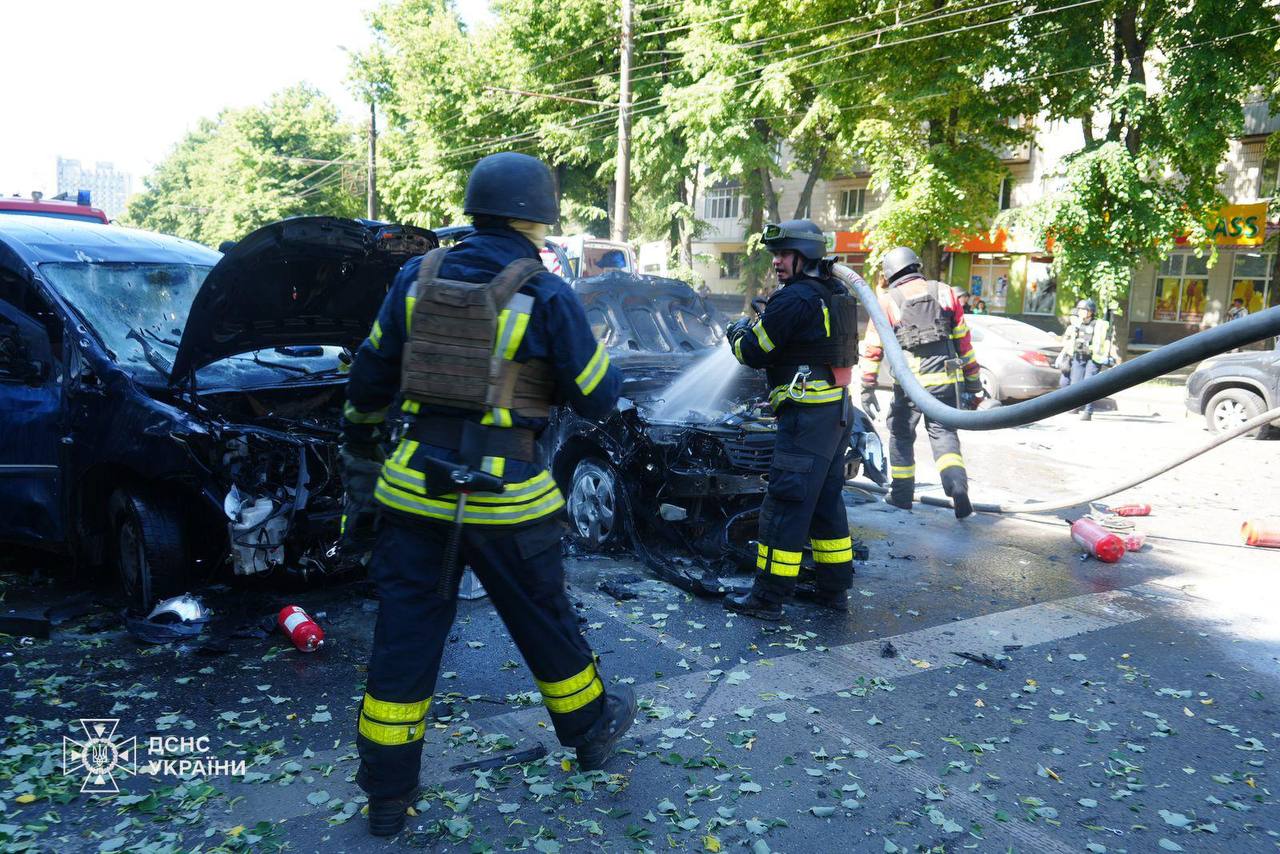
Russian attacks across Ukrainian regions killed at least seven civilians and injured at least 52 over the past day, regional authorities reported on June 4.
Ukrainian air defenses shot down 36 out of the 95 Shahed-type attack drones and decoys launched by Russia overnight, the Air Force said.
Twenty-five drones disappeared from radars or were neutralized by electronic warfare systems, according to the statement.
Russia attacked the northeastern city of Sumy on June 3 with multiple-launch rocket systems, killing four people and injuring 28, the regional authorities said. Another civilian was injured during a drone attack elsewhere in Sumy Oblast.
In Chernihiv Oblast, a Russian drone attack injured a 43-year-old man in his yard in the Novhorod-Siverskyi community, Governor Viacheslav Chaus said.
In Dnipropetrovsk Oblast, an 87-year-old man was wounded when Russia attacked the Nikopol district with drones and artillery, according to Governor Serhii Lysak.
Russian attacks across Donetsk Oblast killed one person and injured two in the village of Serhiivka, said the regional governor, Vadym Filashkin. Five civilians were injured elsewhere in the region.
In Kharkiv Oblast, two people were killed and five injured as Russia launched missiles, drones, and bombs against Kharkiv and the region, Governor Oleh Syniehubov reported.
Russian strikes in Kherson Oblast wounded eight people, Governor Oleksandr Prokudin reported. Three high-rise buildings and 10 houses were damaged.
Russia launched a Kinzhal missile against port infrastructure in Mykolaiv Oblast, authorities said. No casualties were reported.
A civilian was wounded during a heavy Russian drone attack against Odesa, Governor Oleh Kiper said. While most of the drones were shot down, residential buildings were damaged in the city.
 The Kyiv IndependentYuliia Taradiuk
The Kyiv IndependentYuliia Taradiuk